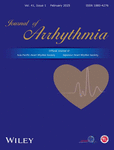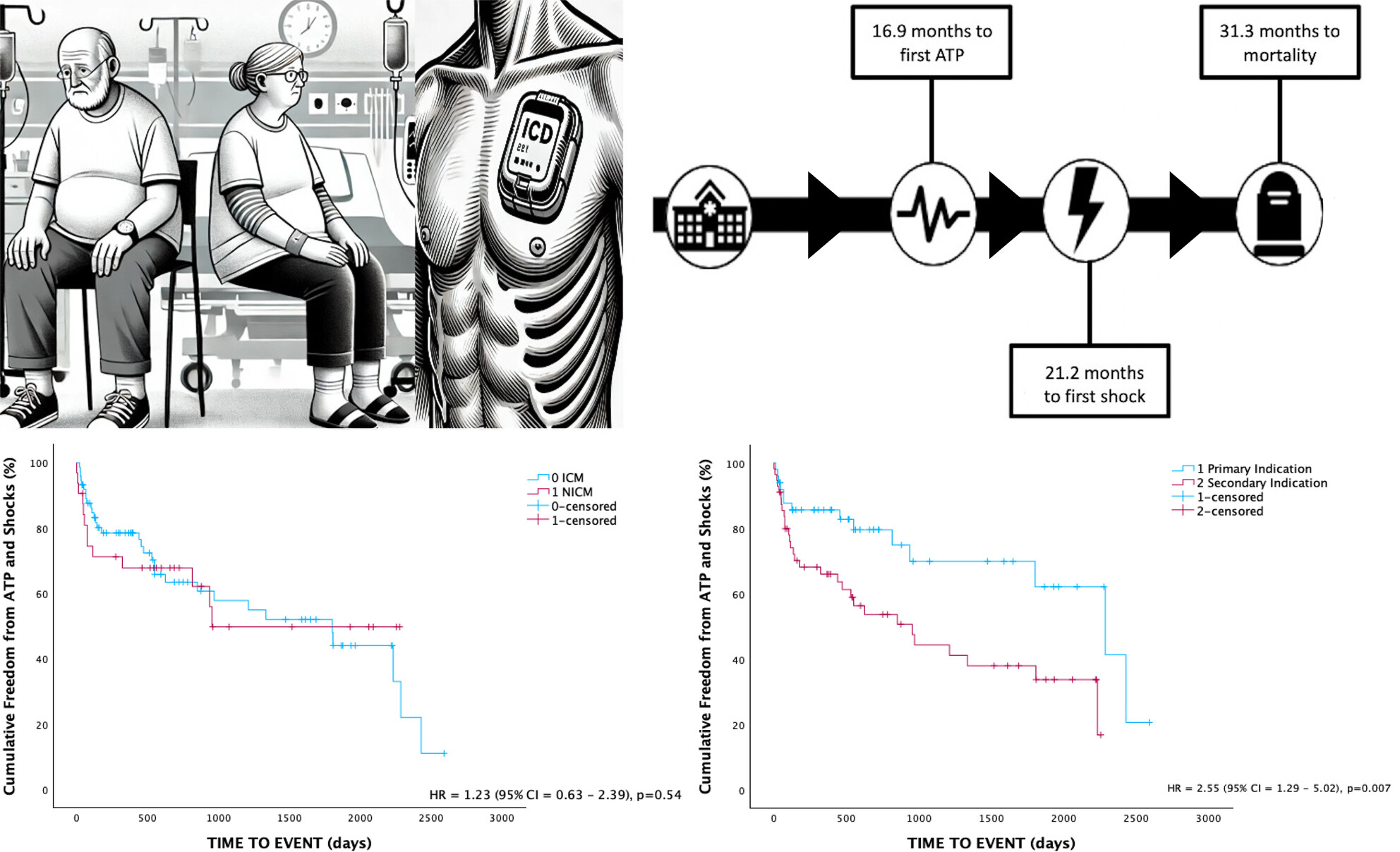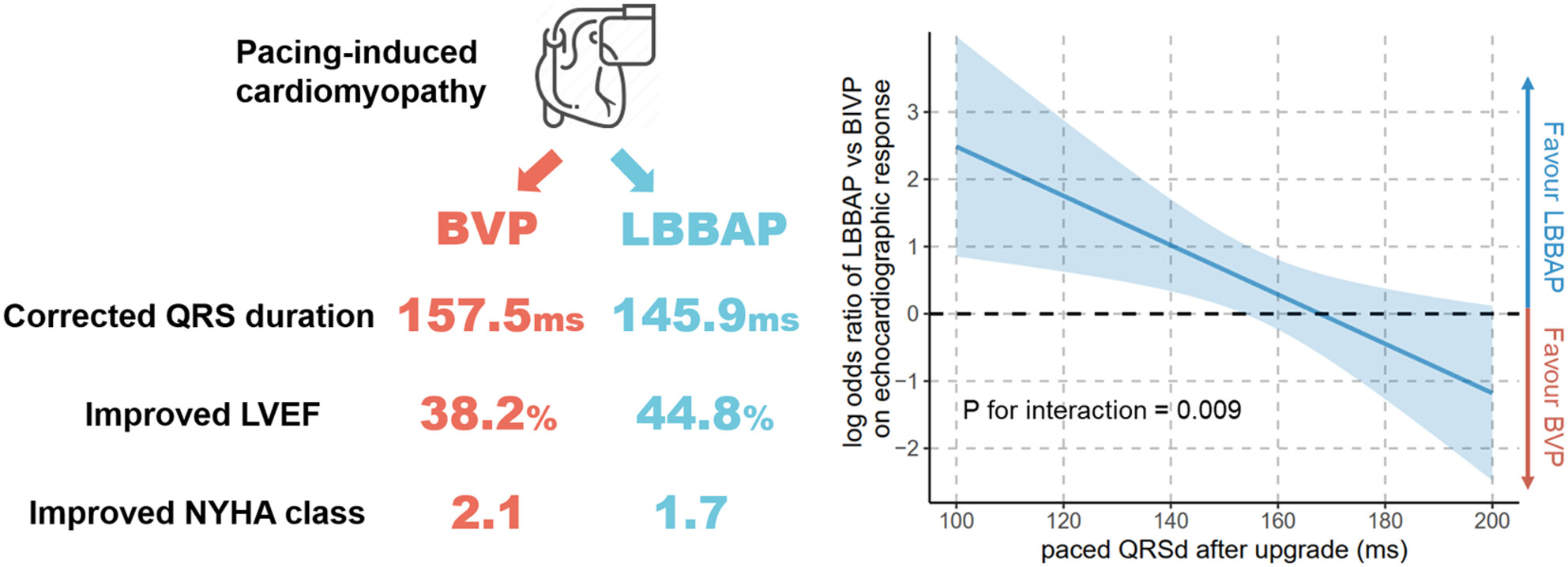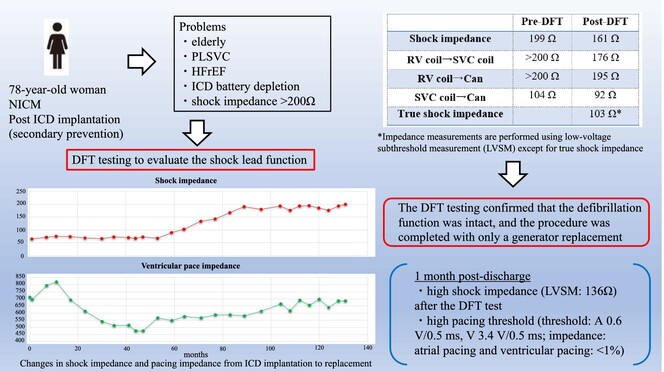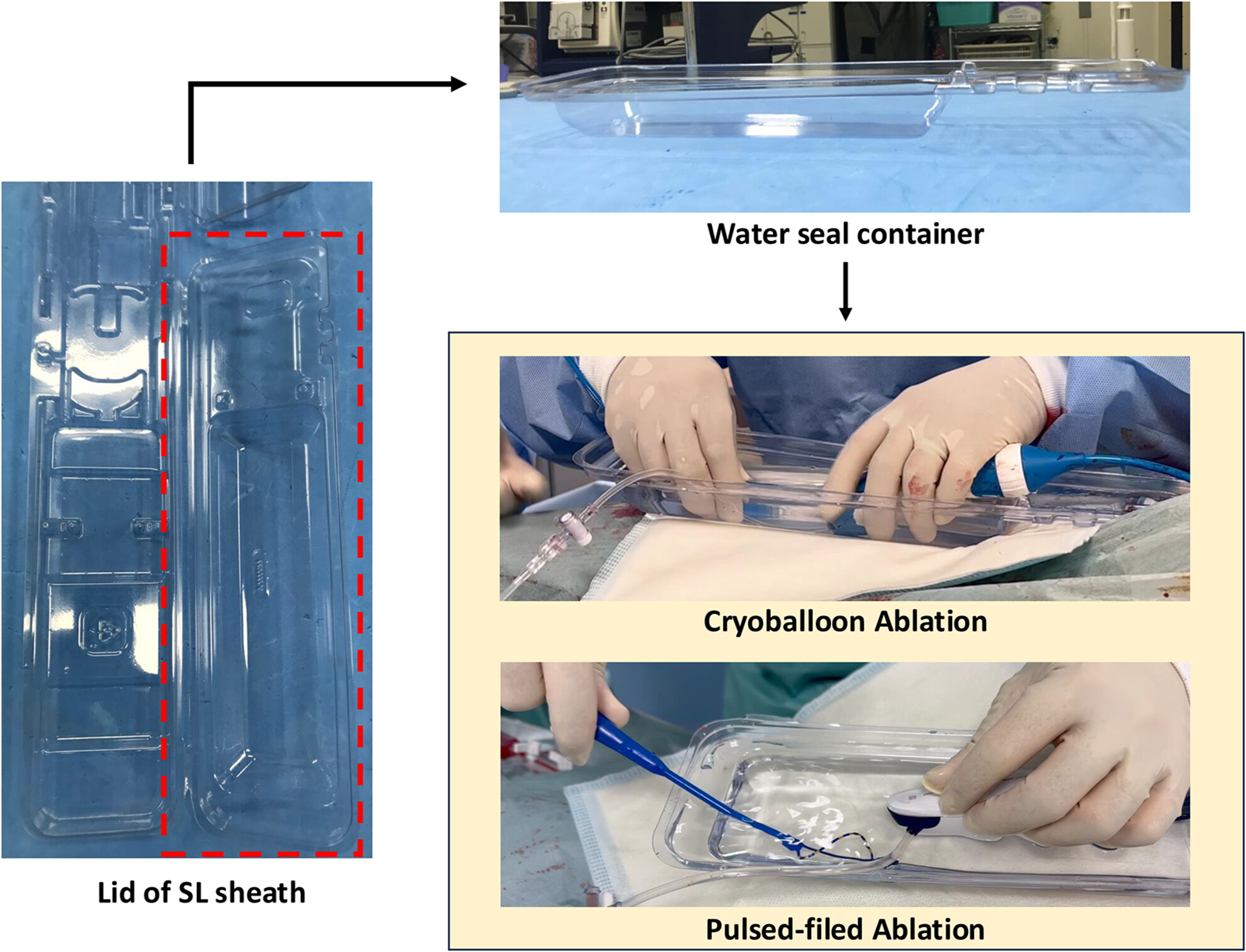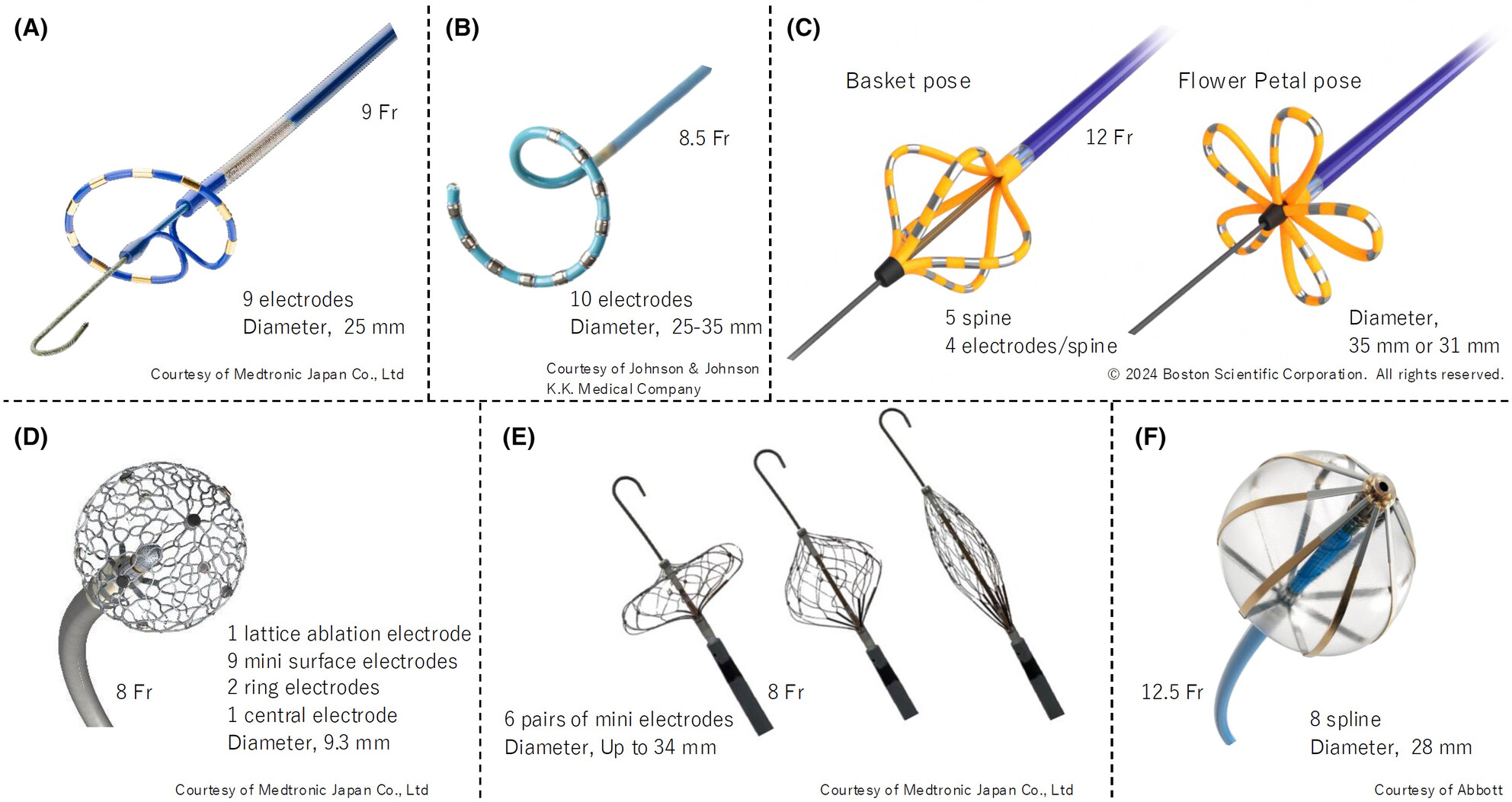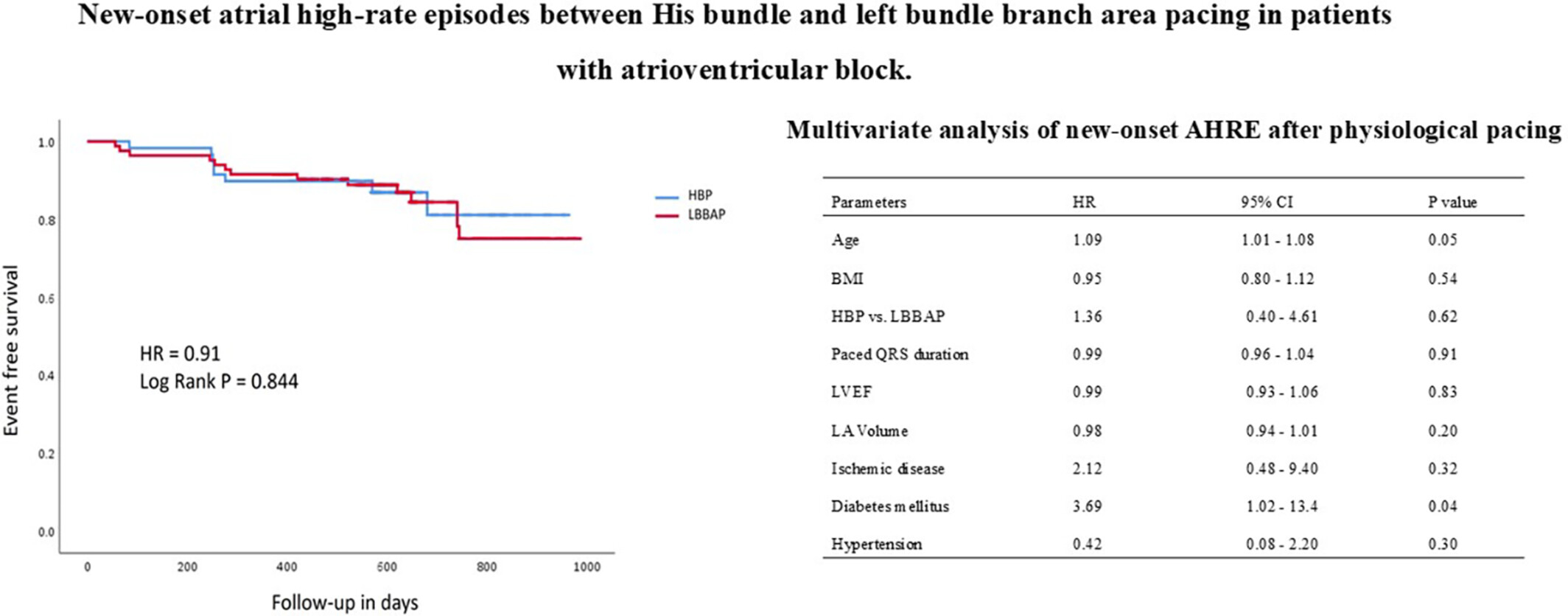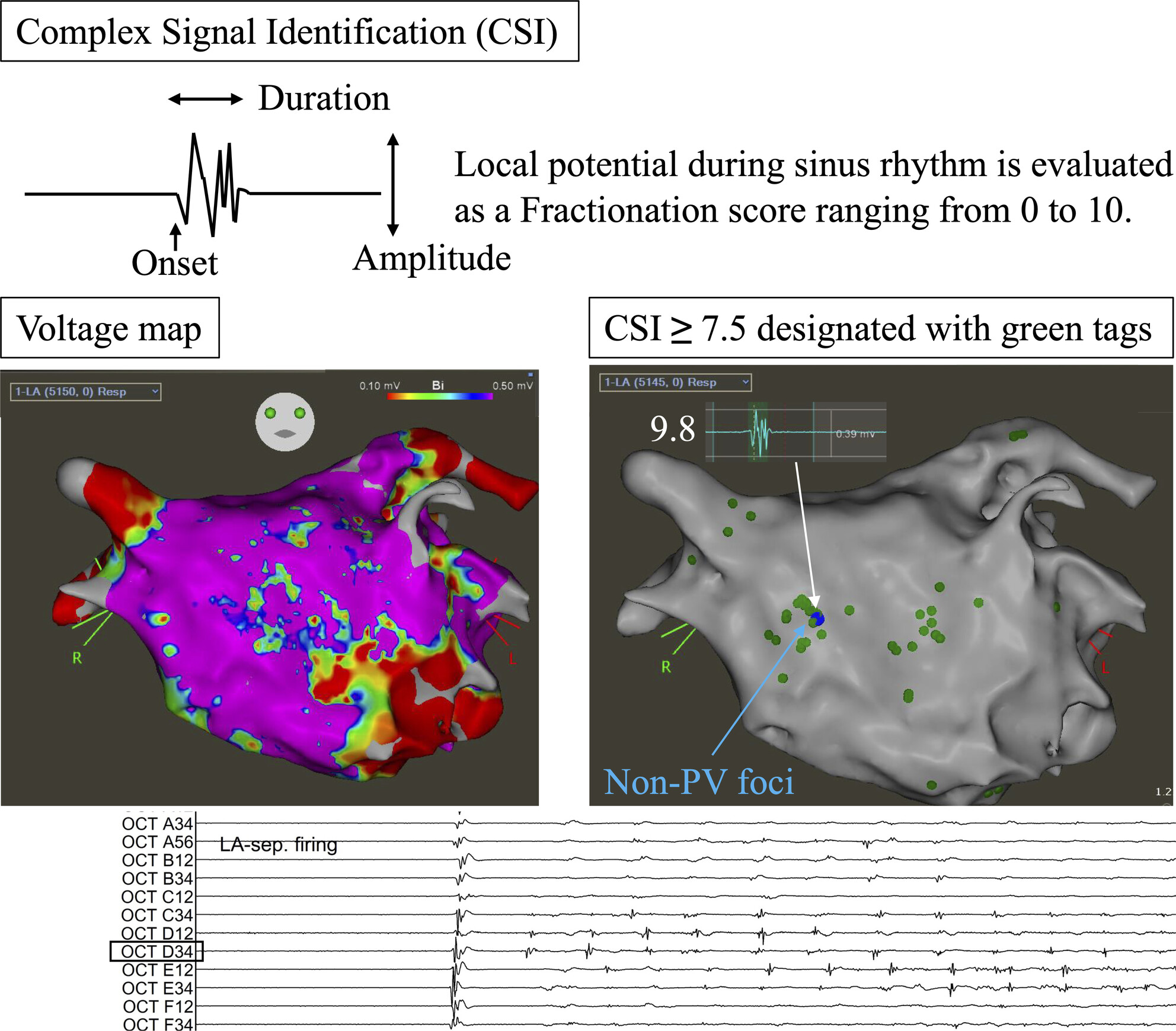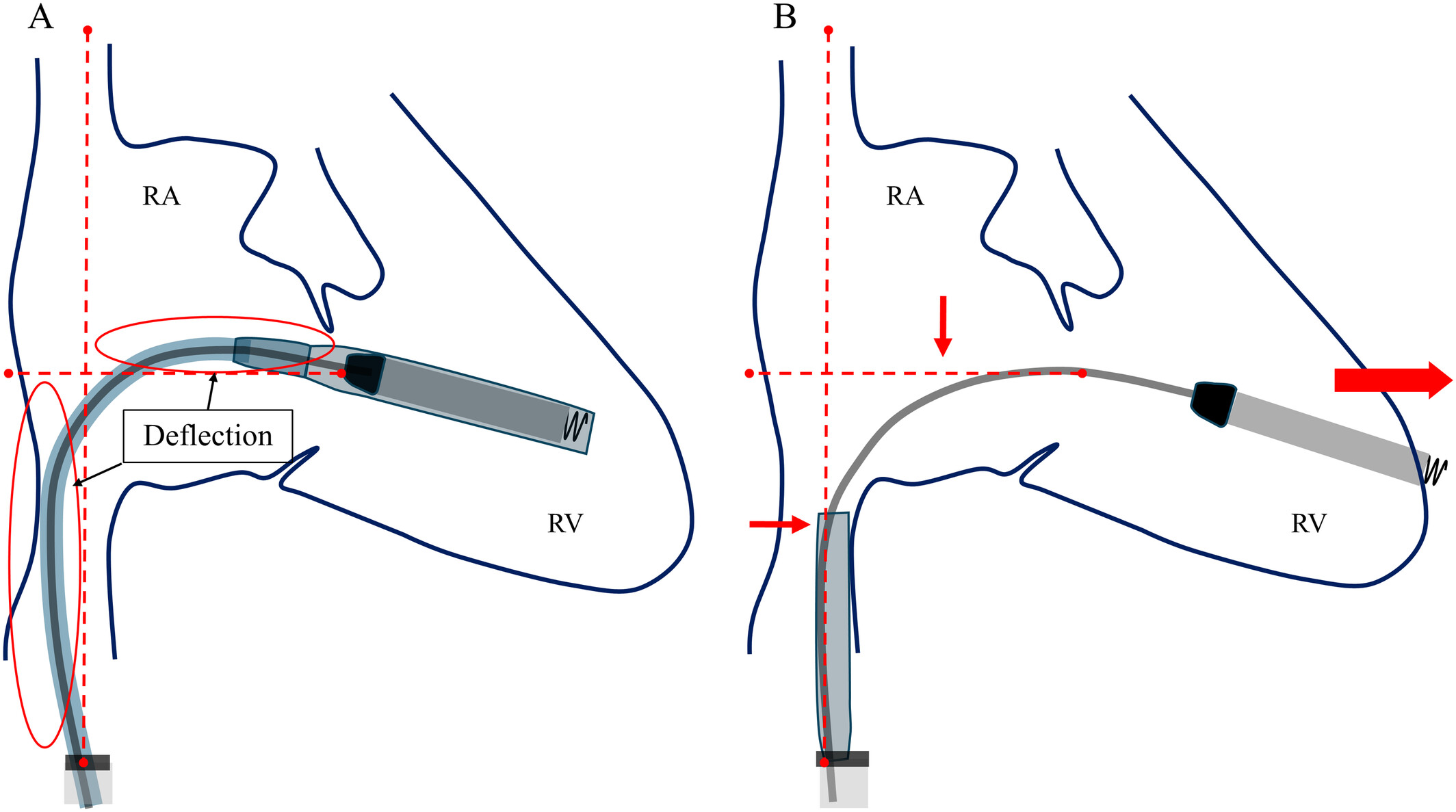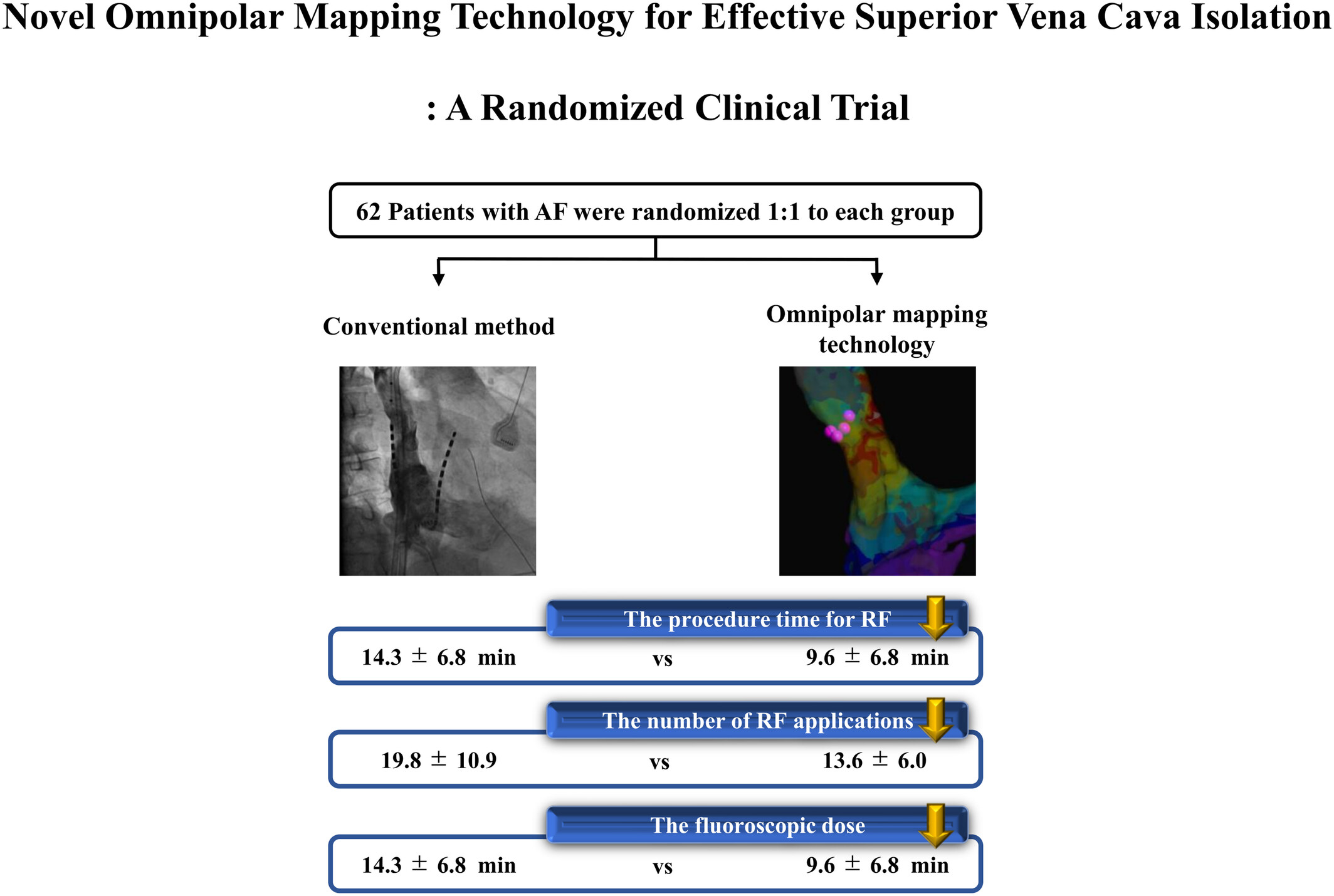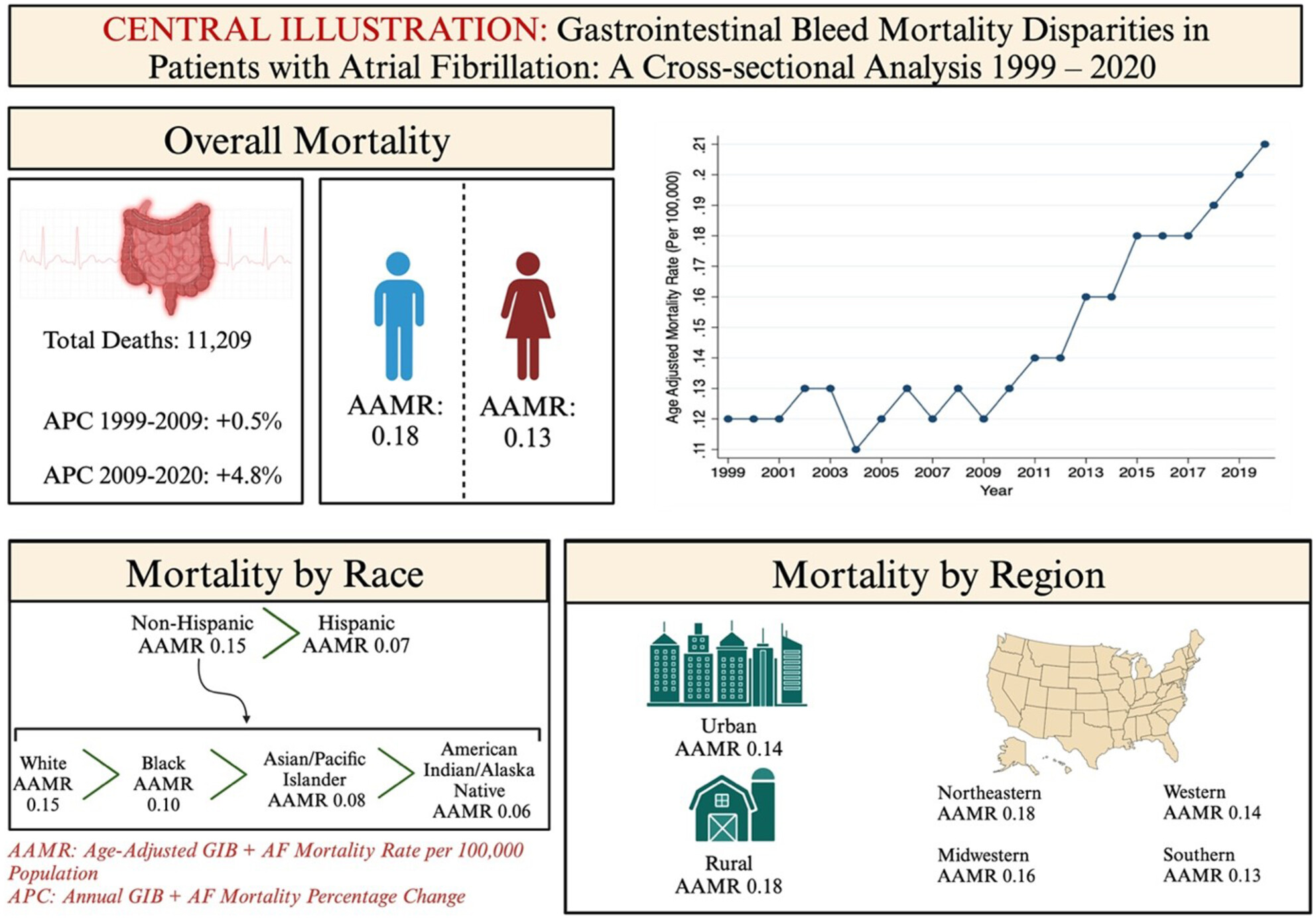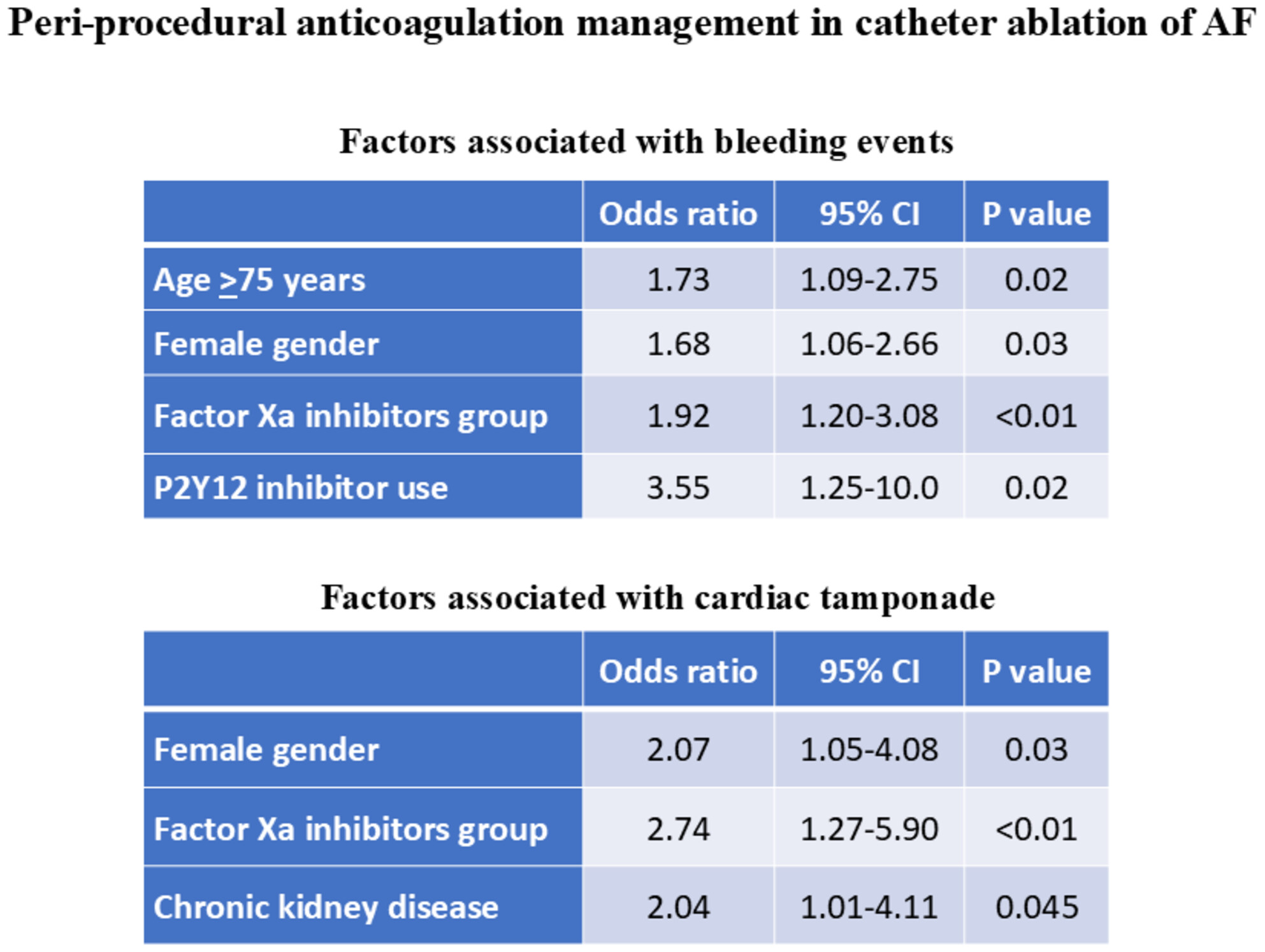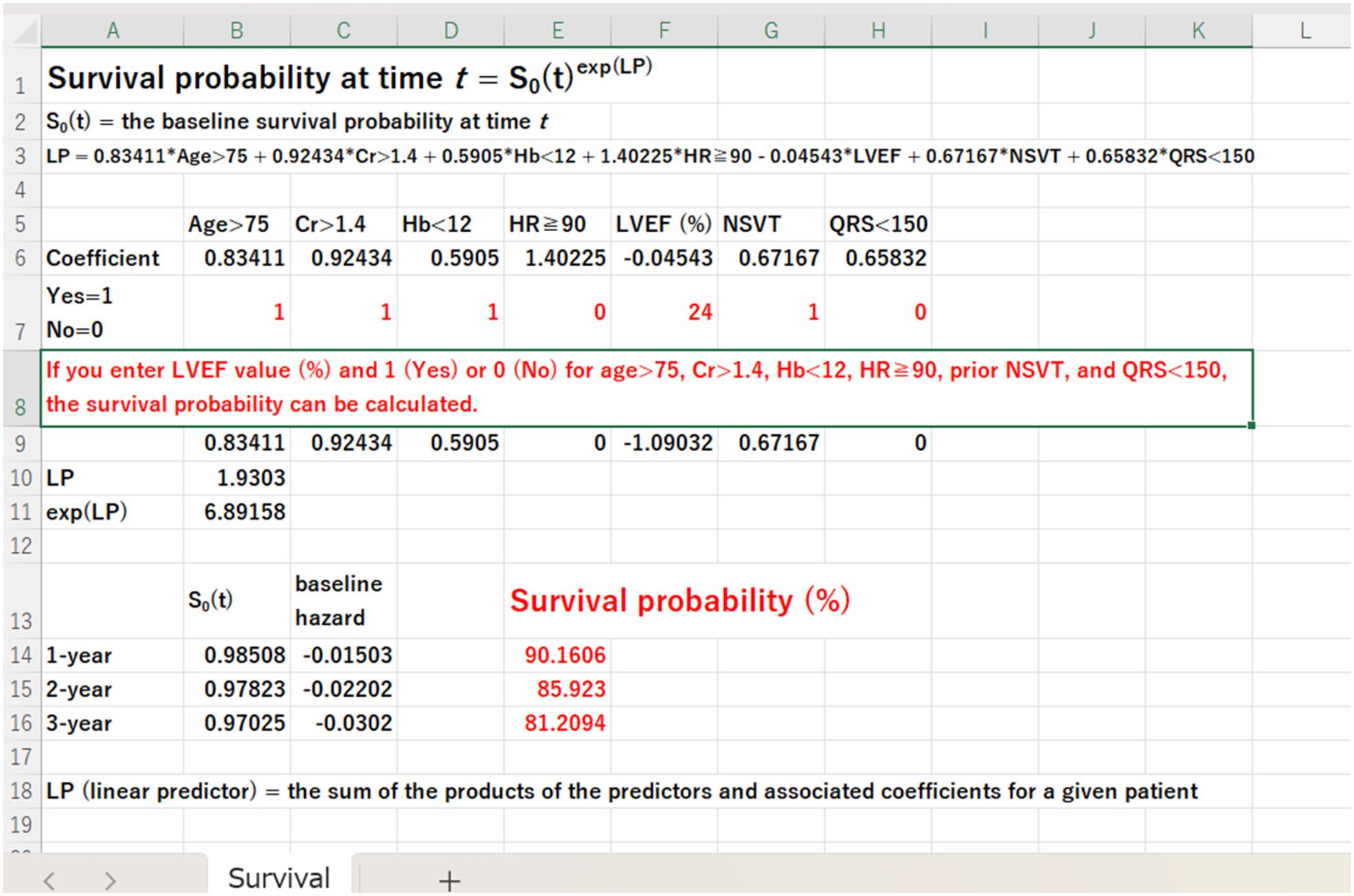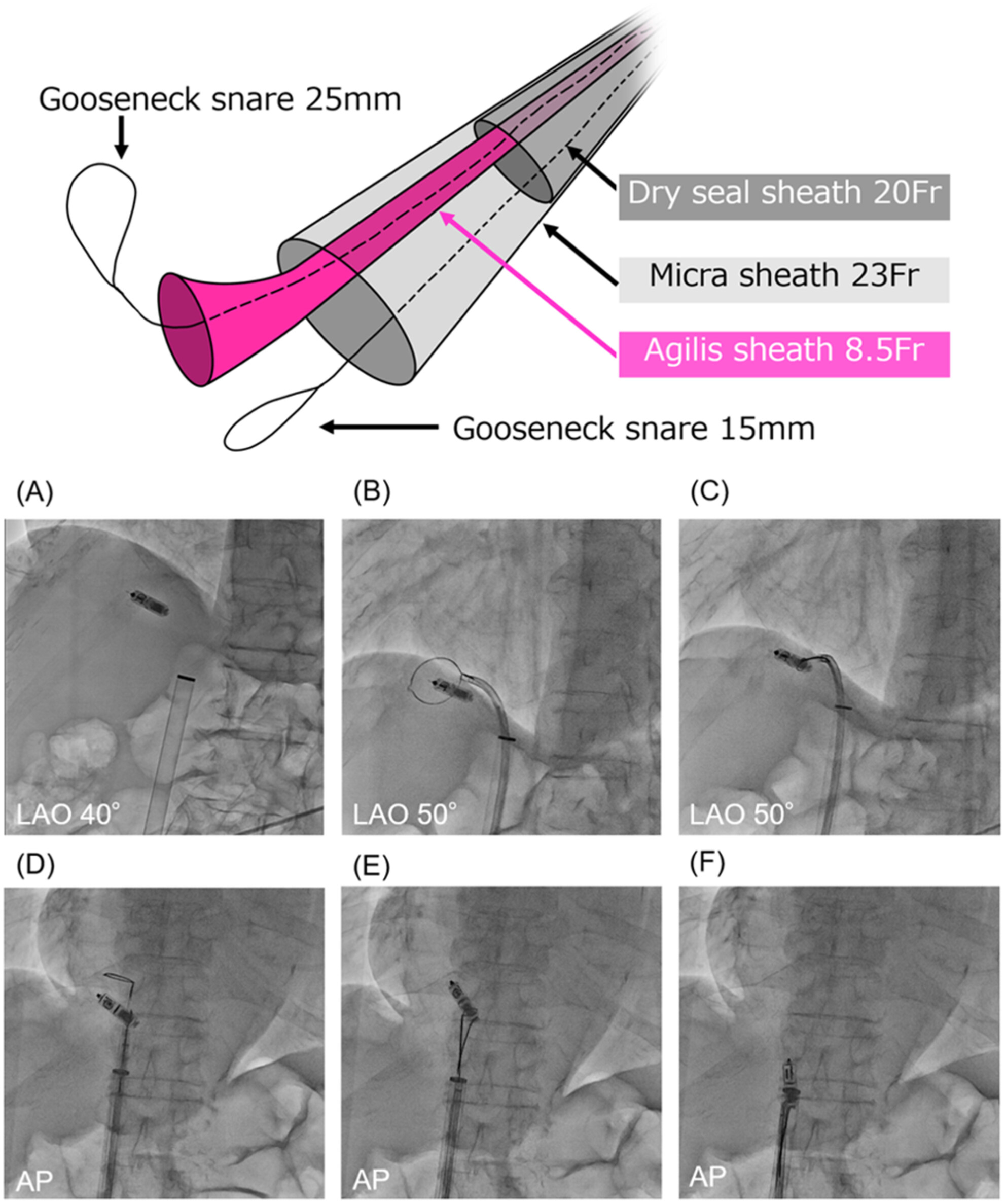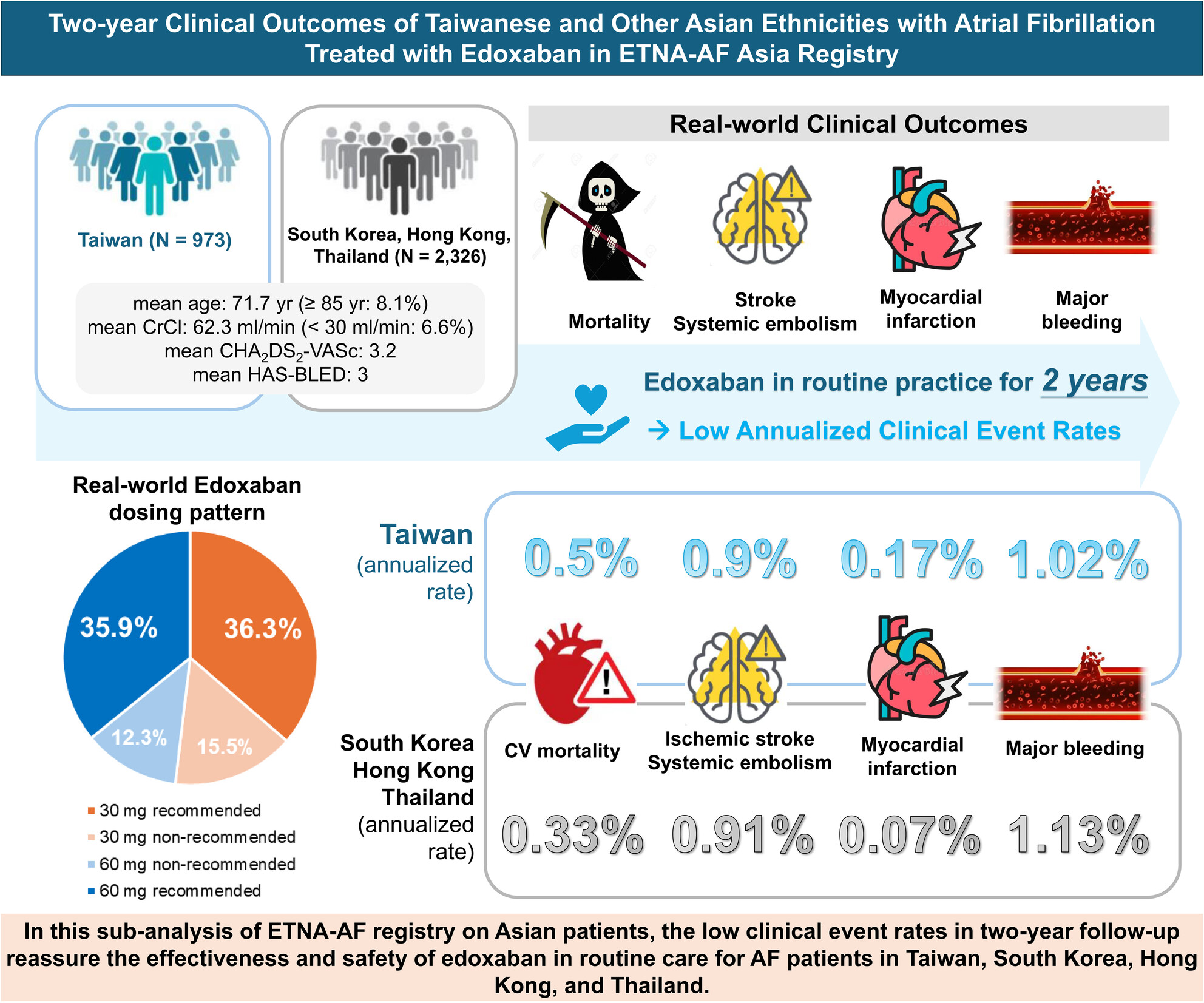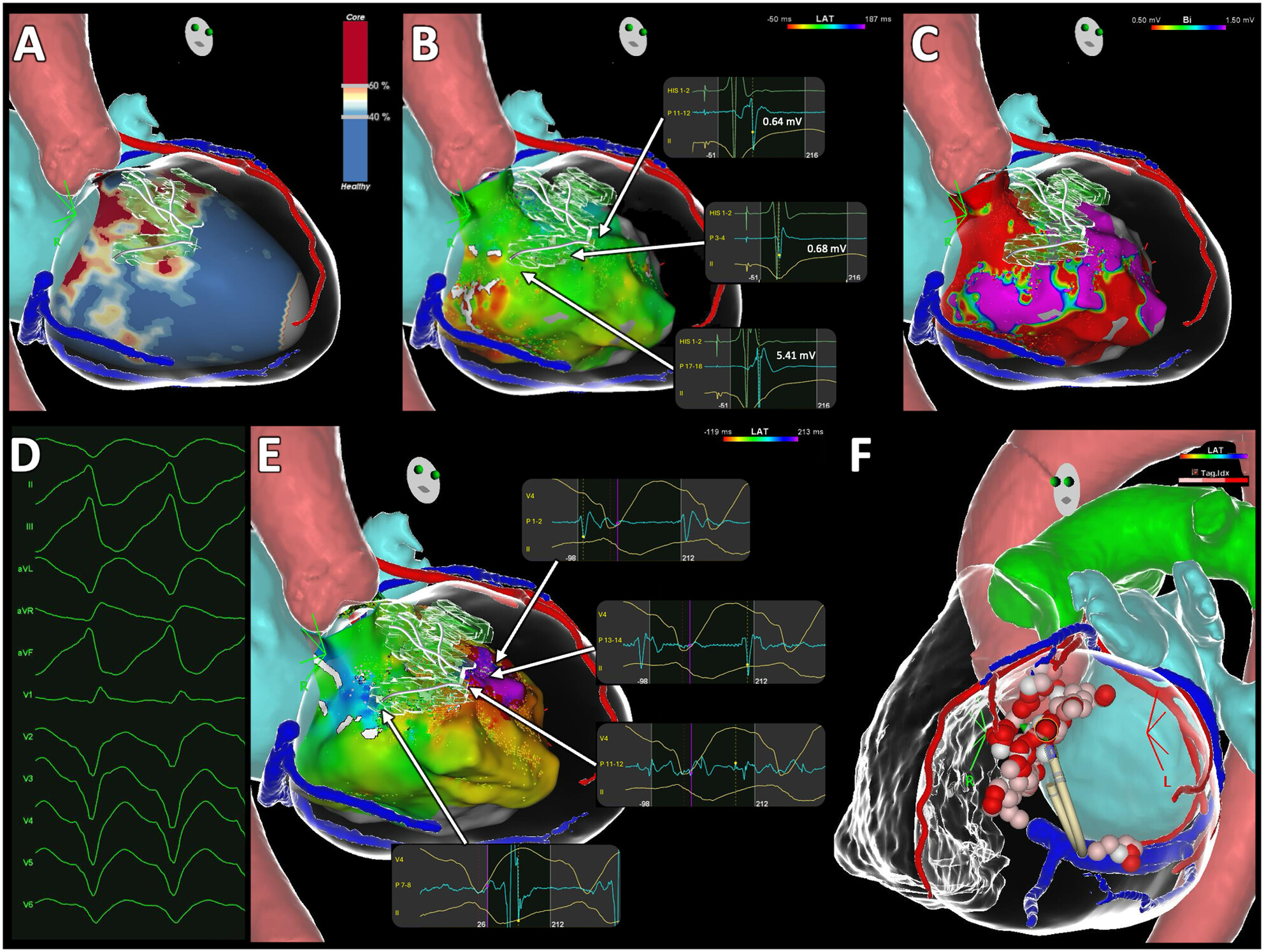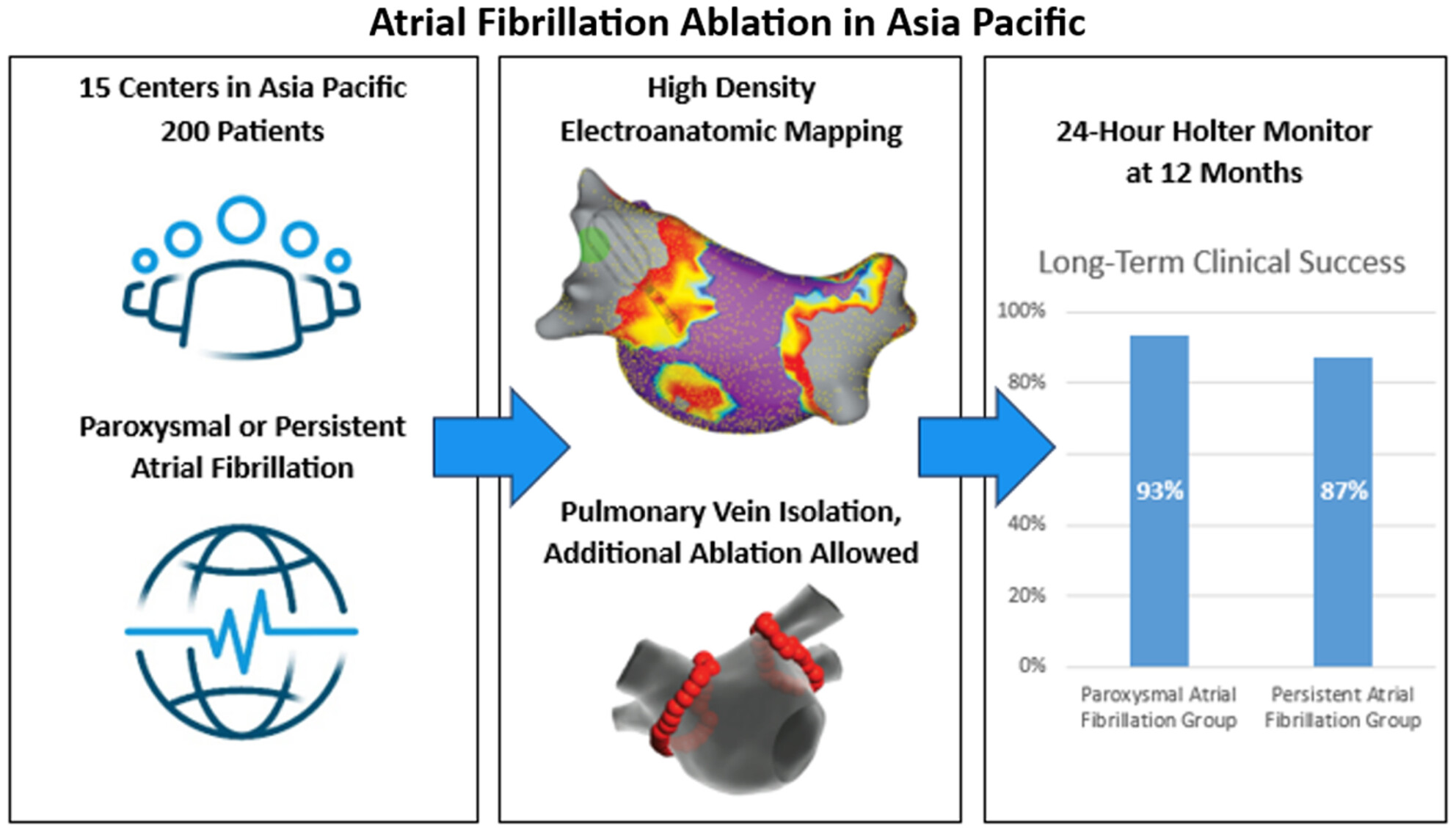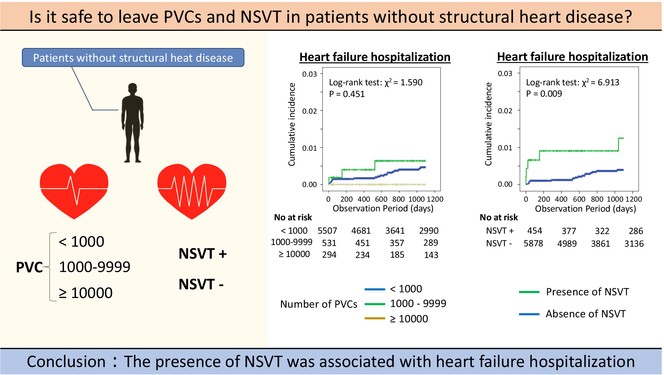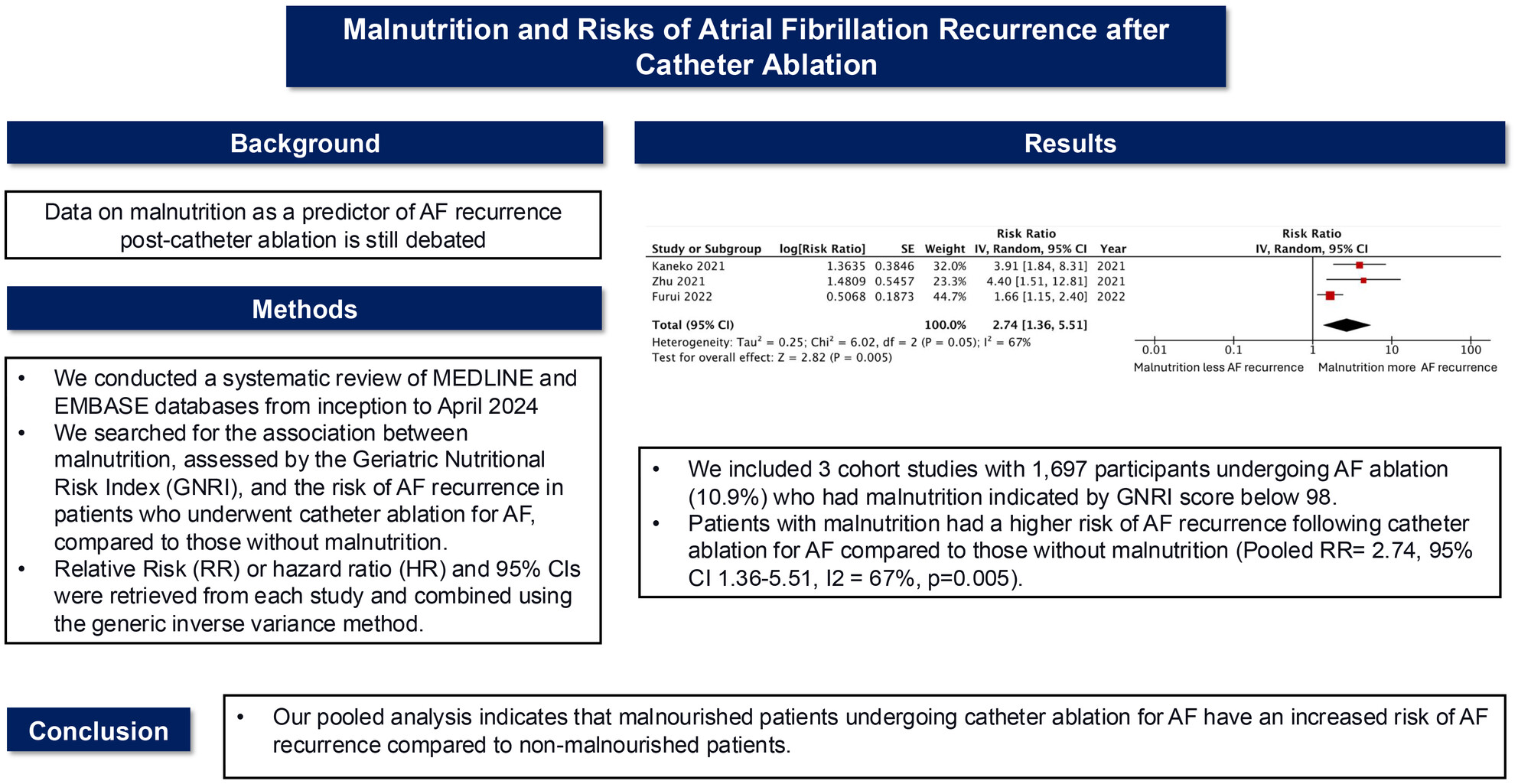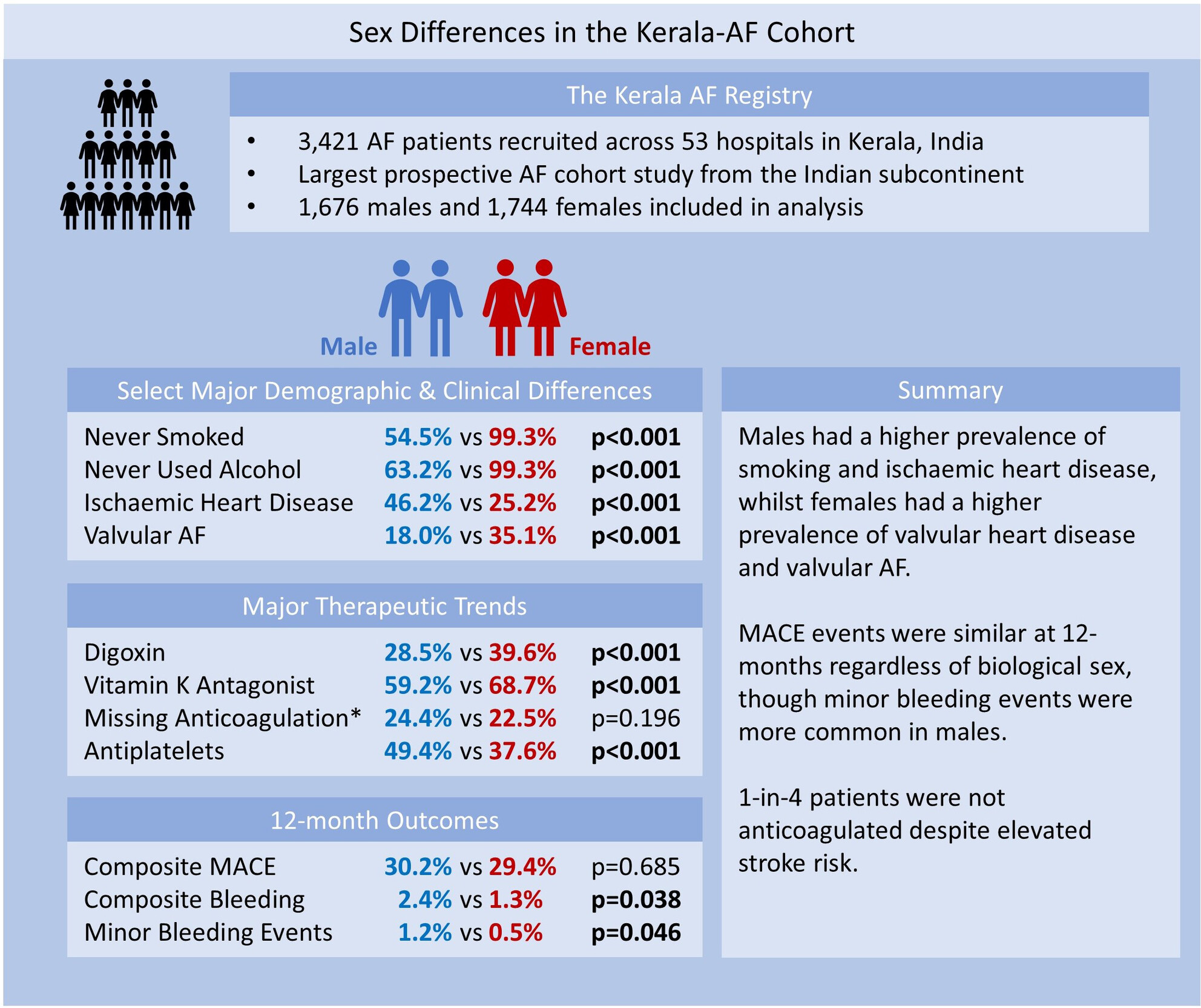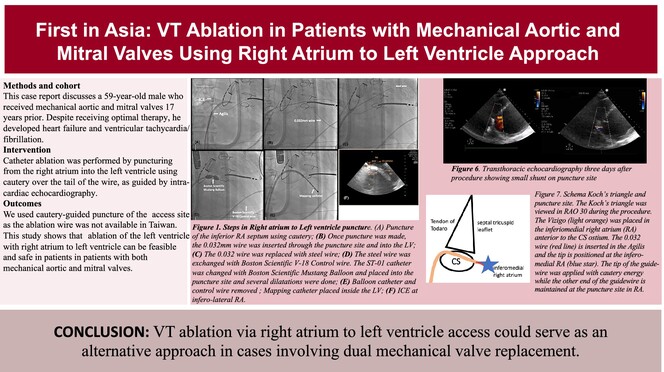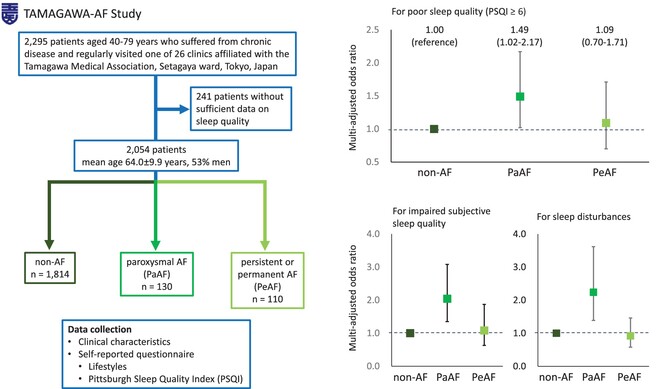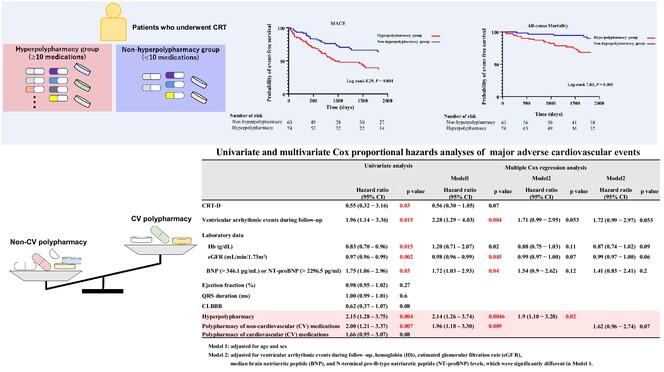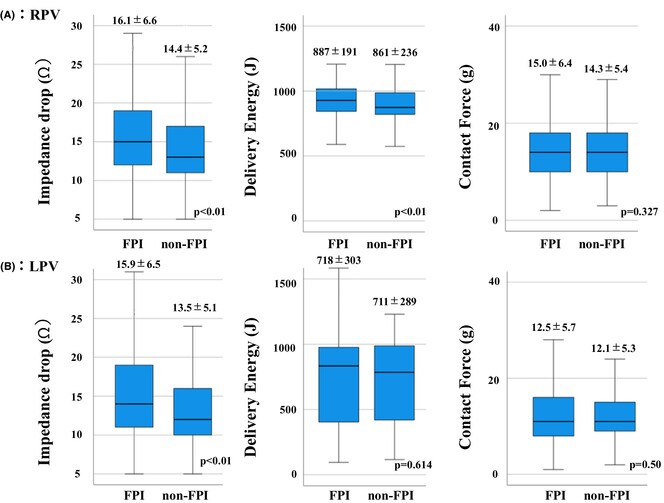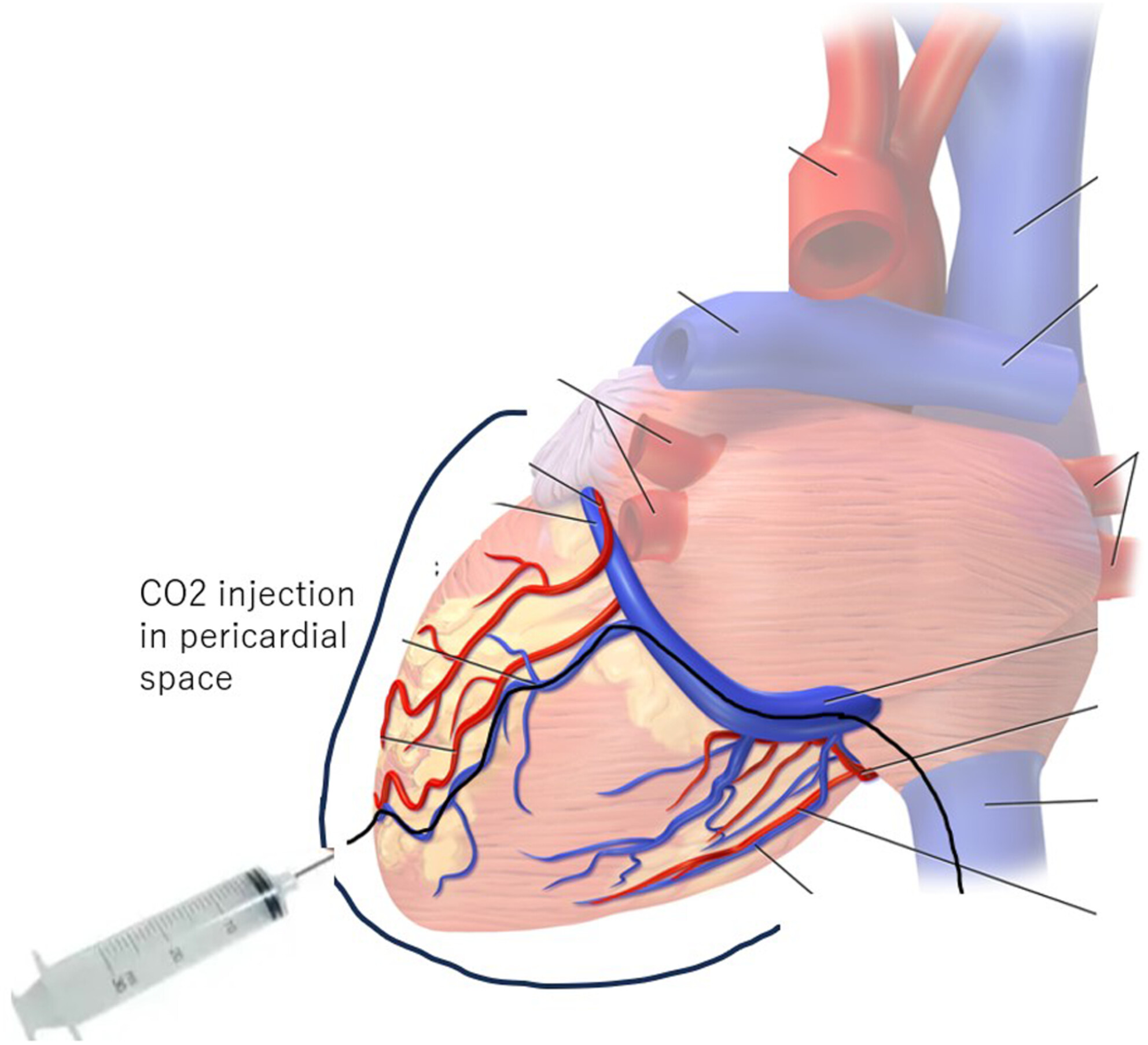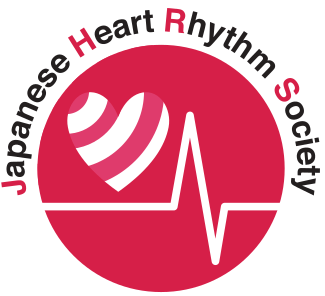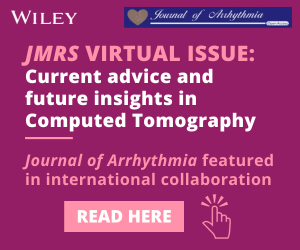Journal list menu
Export Citations
Download PDFs
ISSUE INFORMATION
EDITORIAL
Editorial to “Mid-term comparison of new-onset AHRE between His bundle and left bundle branch area pacing in patients with AV block”
- First Published: 24 February 2025
Editorial to “Utilizing the lid of SL sheath packaging for a water seal catheter insertion technique”
- First Published: 24 February 2025
SPOTLIGHT
Single snare pushing technique: A new bailout technique for retrieving Micra fixed in the tricuspid valve annulus
- First Published: 17 February 2025

When we recapture the Micra system, we capture the body by pulling the tether attached to the delivery catheter and retrieve it, but sometimes it is difficult, and the Micra is dislodged and fixed in the tricuspid valve annulus. Using a single snare catheter from the superior vena cava and pushing the tines changes the orientation of the device and enables recapture.
ORIGINAL ARTICLE
Number needed to treat for net clinical benefit of oral anticoagulants in Asian patients with atrial fibrillation
- First Published: 17 February 2025

The number needed to treat for the net benefit (NNTnet) was calculated from the benefit of stroke prevention and risk of major bleeding of warfarin and non-vitamin K antagonist oral anticoagulants (NOACs) and no oral anticoagulant (OAC). Warfarin had a negative NNTnet compared to no OAC. Only warfarin with TTR 65% has positive NNTnet. NOACs had positive NNTnet compared to no OAC and when compared to warfarin.
Electrocardiographic imaging metrics to predict the risk of arrhythmia in patients with ischemic cardiomyopathy
- First Published: 17 February 2025
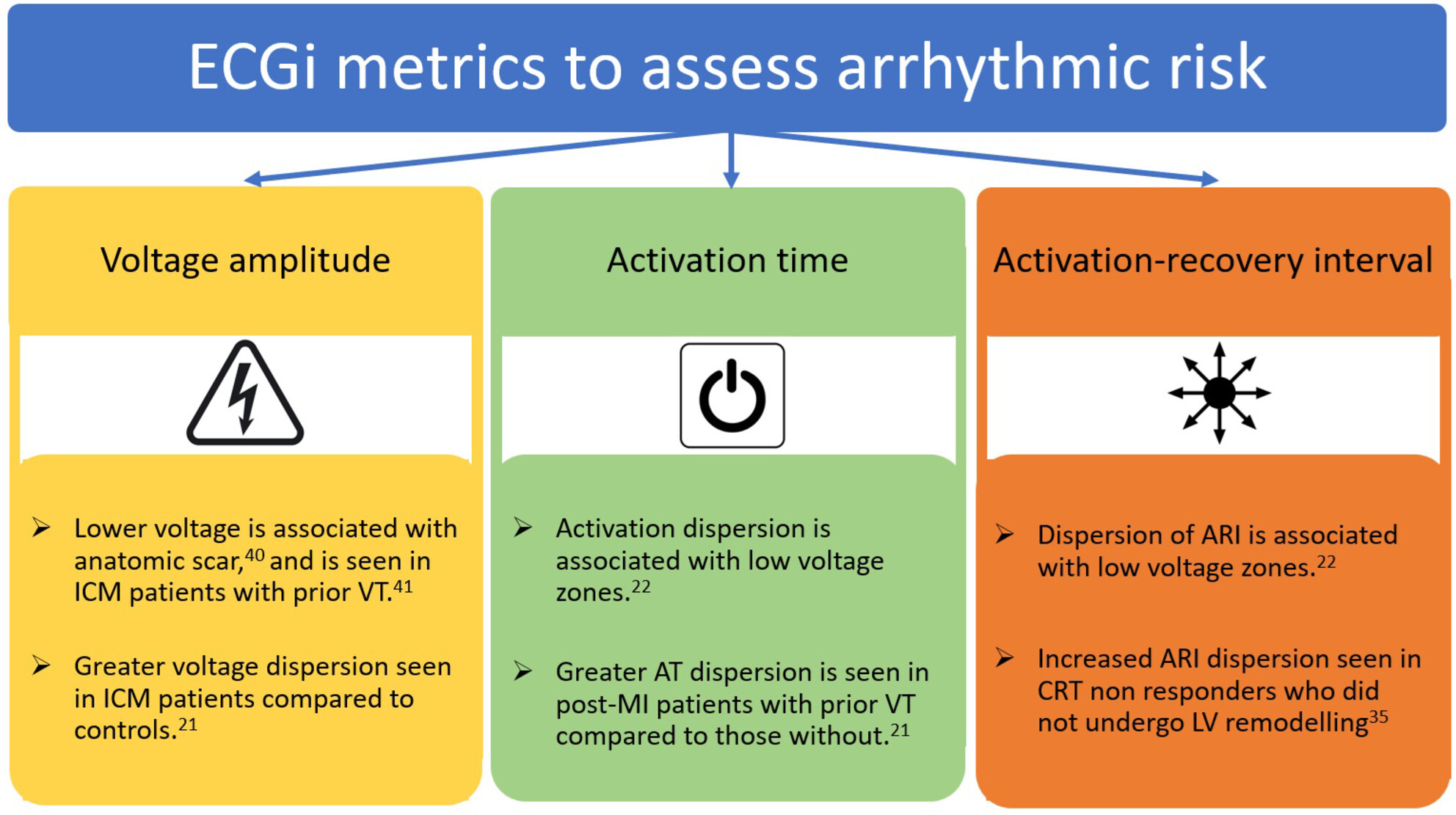
ECGi-specific studies for assessment of arrhythmic risk in ischemic heart disease. Studies specifically using ECGi have identified several metrics that may be associated with ventricular arrhythmia risk in patients with ischemic cardiomyopathy. ARI, activation-recovery interval; AT, activation time; ICM, ischemic cardiomyopathy; LV, left ventricle; MI, myocardial infarction; VT, ventricular tachycardia.
SPOTLIGHT
Successful radiofrequency ablation via transseptal approach for premature ventricular contractions originating from left ventricular outflow tract following self-expanding transcatheter aortic valve implantation
- First Published: 13 February 2025
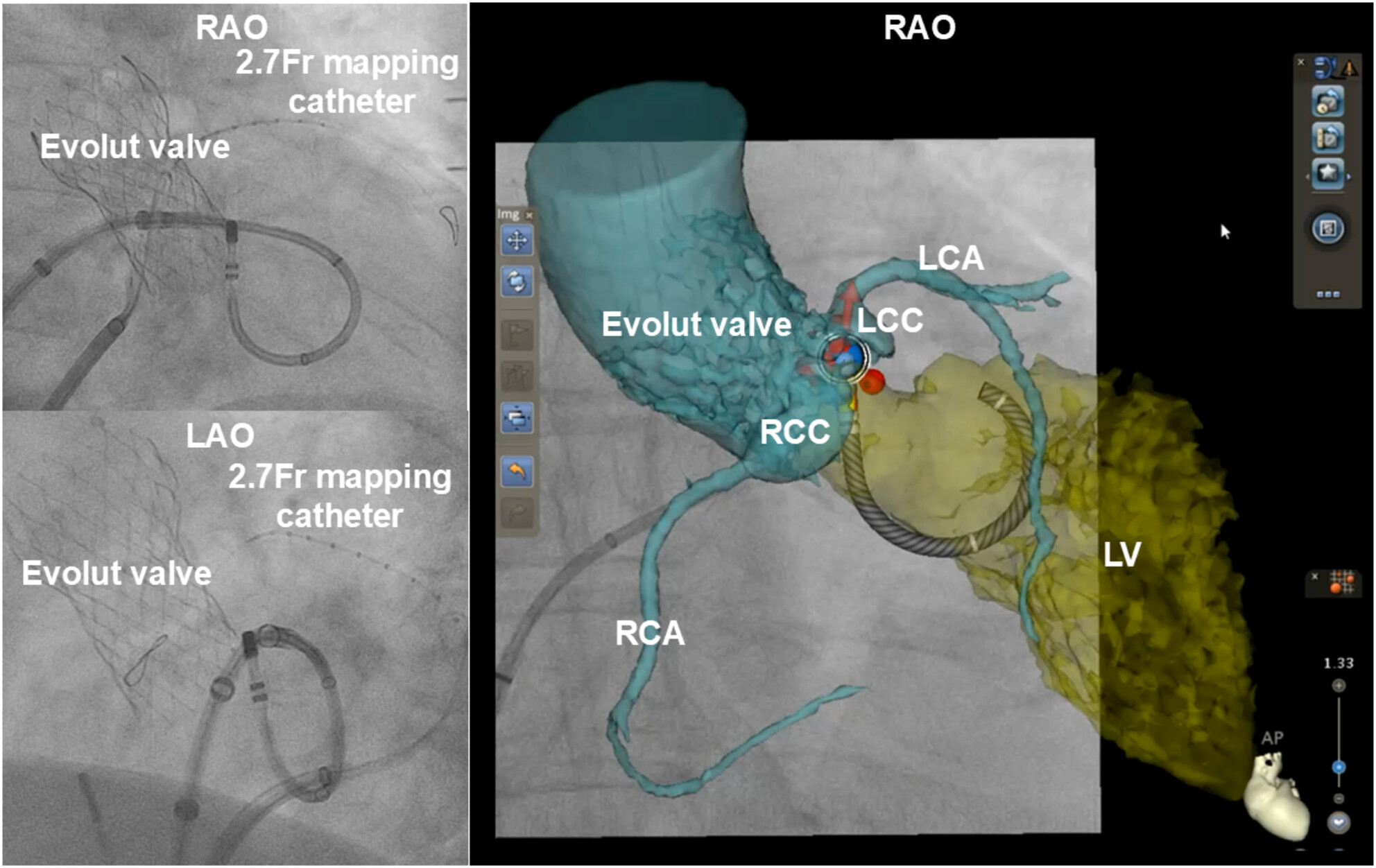
Transseptal catheter ablation resolved ventricular arrhythmias originating from the left ventricular outflow tract following transcatheter aortic valve implantation with a self-expanding Evolut valve. This report highlights the transseptal approach as a safe and effective alternative, overcoming the structural complexities of self-expanding valves while reducing procedural risks and preserving valve integrity.
ORIGINAL ARTICLE
Implantable cardiac defibrillator outcomes in octogenarians
- First Published: 13 February 2025
SPOTLIGHT
Managing a ventricular tachycardia storm: Looking beyond the horizon
- First Published: 13 February 2025

The case highlights the possibility of nonischemic cardiomyopathy in patients with coronary artery disease and the complex nature of the isthmus with multiple entry and exit points. A combination of multiple strategies, that is, unipolar mapping, isochronal late activation mapping during sinus rhythm, and positioning of a multielectrode catheter at the putative isthmus during VT induction in the case of hemodynamically unstable VT, was used to achieve a successful outcome.
ORIGINAL ARTICLE
Impact of baseline-pool local impedance on lesion formation using a local impedance-sensing catheter: Lessons from a porcine experimental model
- First Published: 13 February 2025
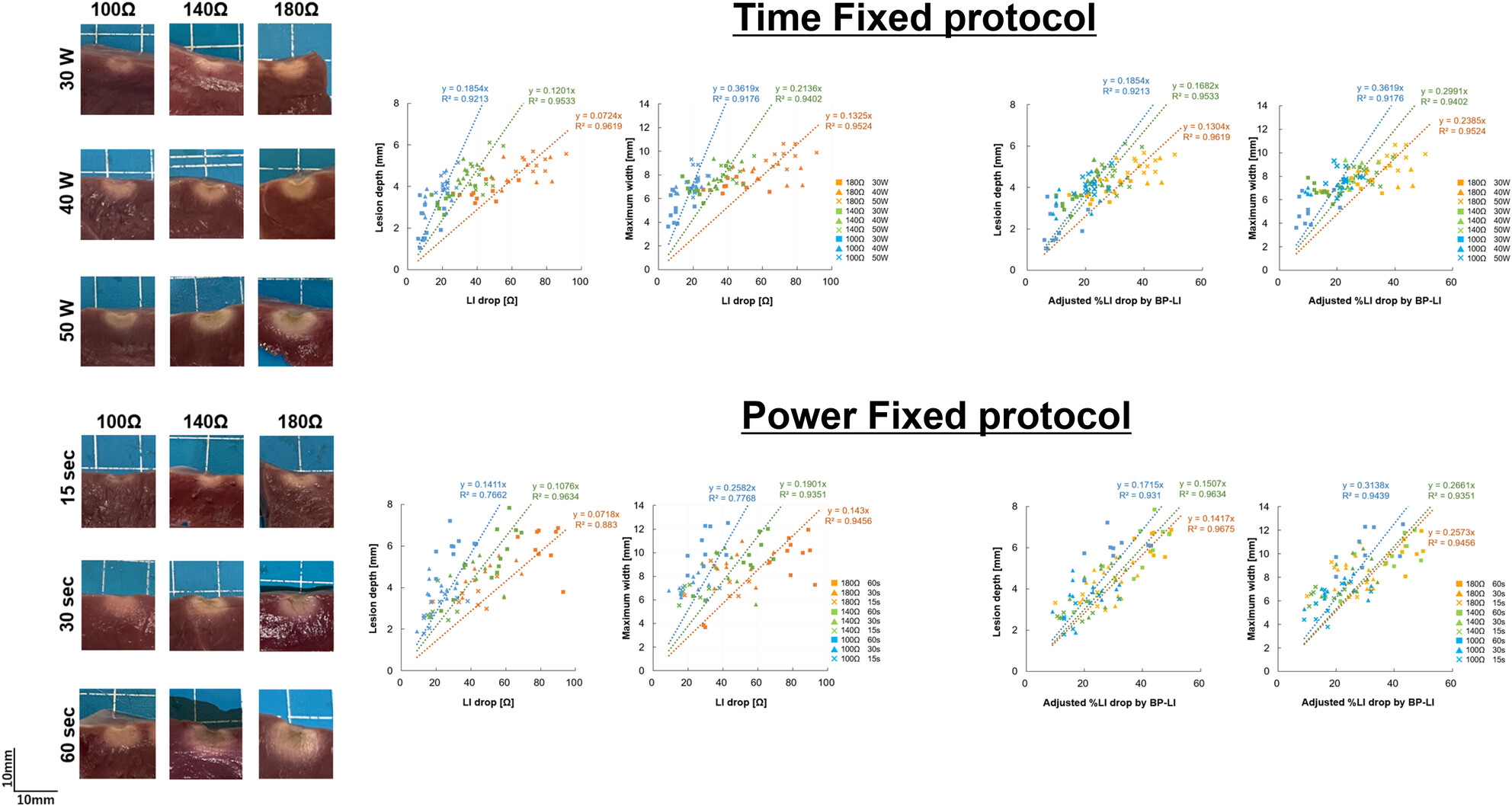
Lesion creation was influenced by blood pool local impedance (BP-LI) in the Stablepoint catheter. Time-fixed and power-fixed protocols showed different linear regressions between LI drop and lesion sizes across three BP-LIs (100, 140, and 180 ohms). Adjusted LI by BP-LI corrected lesion formation prediction among three BP-LIs.
Effectiveness of upgrade left bundle branch area pacing for right ventricular pacing-induced cardiomyopathy: Extra QRS shortening matters
- First Published: 13 February 2025
SPOTLIGHT
Can lead damage be ruled out using defibrillation threshold testing in patients with very high-impedance shock leads?
- First Published: 12 February 2025
Utilizing the lid of SL sheath packaging for a water-seal catheter insertion technique
- First Published: 07 February 2025
Feasibility of left bundle branch area pacing with left axillary pacemaker implantation in a young female patient with heart failure
- First Published: 07 February 2025

Device implantation with a generator pocket raises cosmetic concerns regarding external appearance. We present a case of successful left bundle branch area pacing and left axillary pacemaker generator implantation via a two-incision approach in a young female patient, resulting in favorable cardiac function and cosmetic satisfaction.
A novel ablation strategy of slow/fast atrioventricular nodal reentrant tachycardia targeting the atrial activation focusing point at the inferior Koch's triangle: Identification of entrance site of slow pathway using high-resolution 3D mapping
- First Published: 07 February 2025

This is the case of a 29-year-old female with sudden palpitations due to tachycardia. The atrial activation focusing point (AFP) was presumed to be the atrial entrance site within the reentry circuit of slow/fast atrioventricular nodal reentrant tachycardia by postpacing interval mapping. AFP is a novel ablation site because it is more distal to the His-bundle recording site and more atrial site compared to the conventional SP ablation site.
ORIGINAL ARTICLE
Sex based disparities in hospitalization and readmission outcomes for complete atrioventricular block: Insights from United States readmission data
- First Published: 07 February 2025
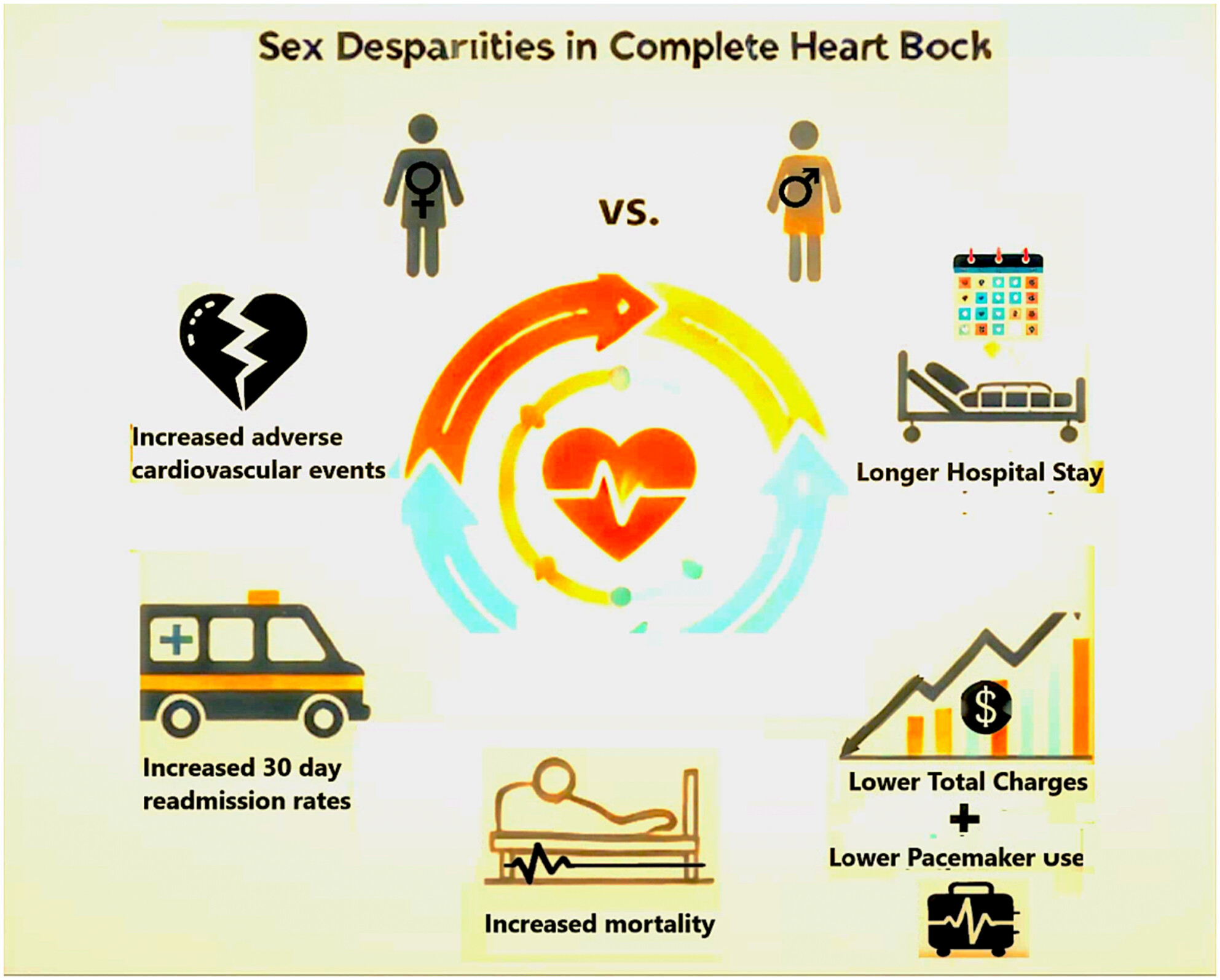
Female patients hospitalized with complete heart block face higher risks of adverse outcomes, including increased mortality and cardiac events, yet are less likely to receive timely pacemaker implantation compared to male patients. Recognizing female CHB patients as a high-risk group necessitates tailored management and interventions to improve their clinical outcomes.
LETTER TO THE EDITOR
Critique of omnipolar mapping claims in superior vena cava isolation: A call for standardization
- First Published: 07 February 2025
SPOTLIGHT
Unusual left-sided variant orientation of the slow conduction zone in adenosine-sensitive atrial tachycardia
- First Published: 07 February 2025
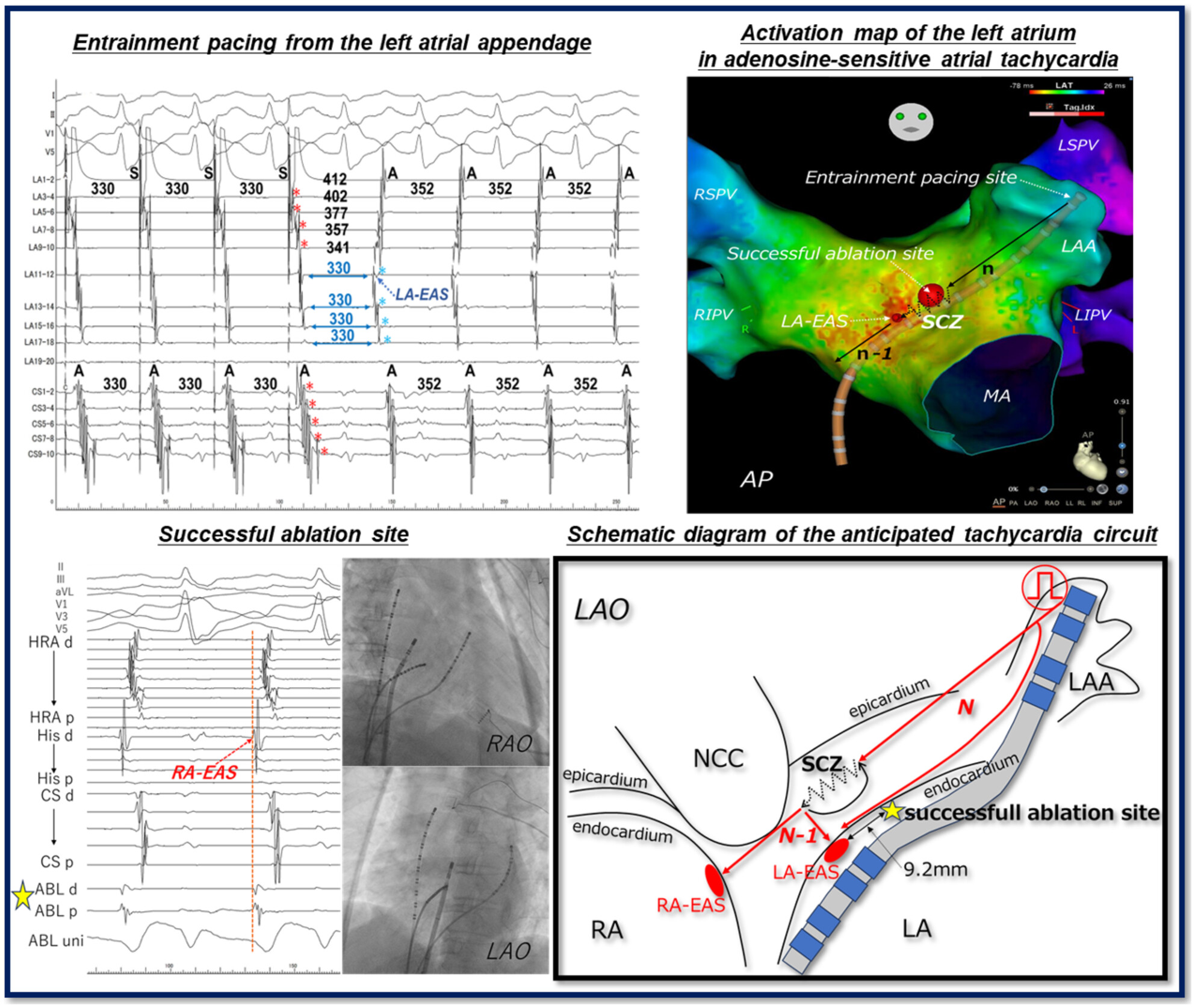
Adenosine-sensitive atrial tachycardia (AT) is typically associated with a slow conduction zone (SCZ) near the atrioventricular node or tricuspid annulus. We report an unusual case of adenosine-sensitive AT with a SCZ located between the left atrial appendage and the left atrial anterior septum, which was successfully ablated 9.2 mm from the left atrial earliest activation site. This case highlights the importance of advanced mapping and entrainment techniques in the identification and management of rare left-sided SCZ variants of adenosine-sensitive AT.
CLINICAL REVIEW
Catheter ablation using pulsed-field energy: Advantages and limitations compared with conventional energy
- First Published: 04 February 2025
ORIGINAL ARTICLE
Mid-term comparison of new-onset AHRE between His bundle and left bundle branch area pacing in patients with AV block
- First Published: 04 February 2025
EDITORIAL
Editorial to “disparities in cardiac arrest mortality among patients with chronic kidney disease: A US based epidemiological analysis”
- First Published: 03 February 2025
ORIGINAL ARTICLE
Comparative analysis of left bundle branch area pacing in patients with and without a history of open-heart surgery
- First Published: 30 January 2025
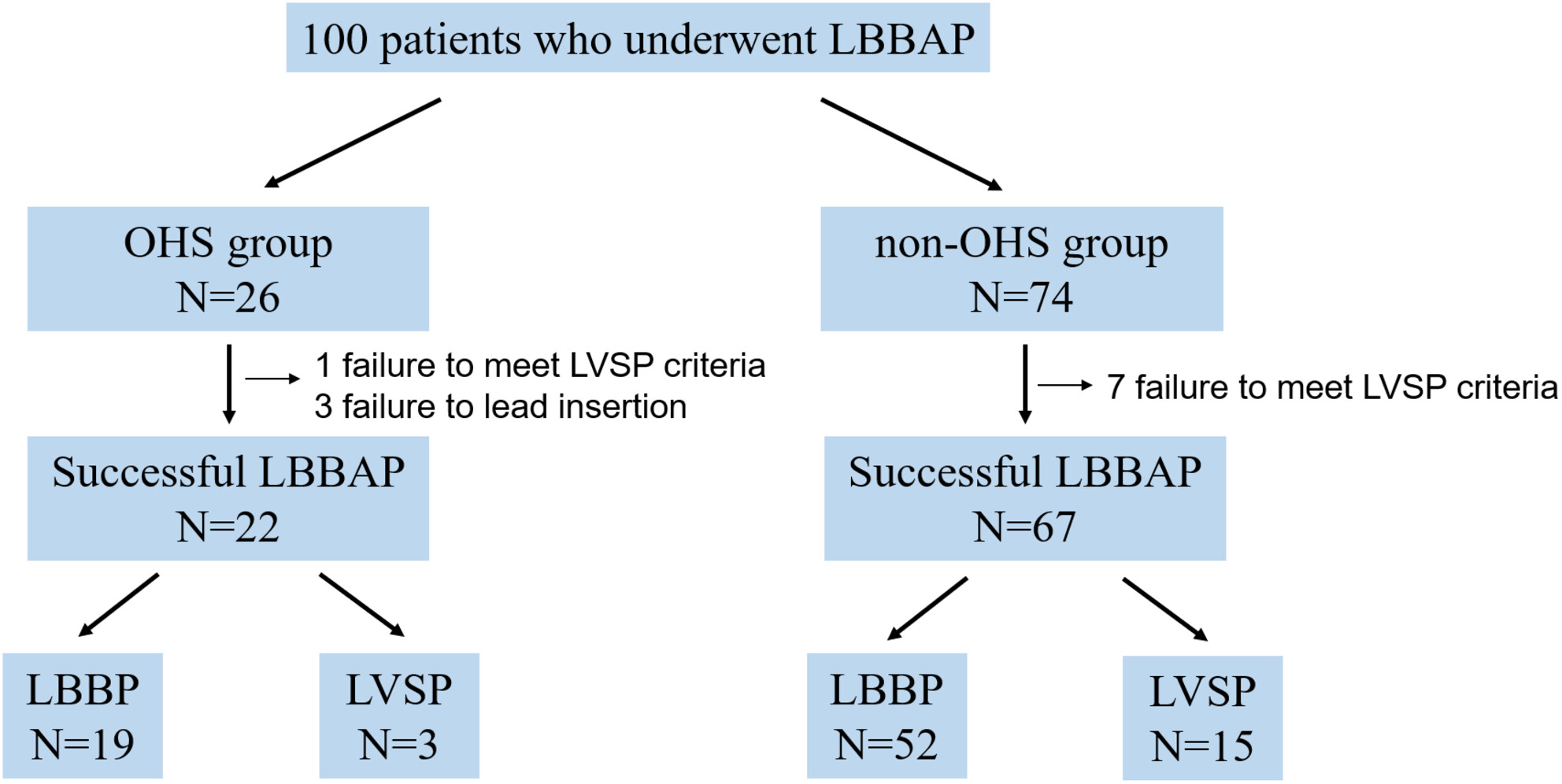
This study highlights the feasibility and safety of left bundle branch area pacing (LBBAP) in patients with a history of open-heart surgery (OHS). Despite increased technical difficulty, LBBAP achieved comparable success rates in OHS and non-OHS groups, with stable pacing parameters observed over 1 year.
SPOTLIGHT
Novel mapping techniques for ablation of non-pulmonary vein foci using complex signal identification
- First Published: 27 January 2025
A case of successful salvage despite right ventricular perforation during AVEIR VR leadless pacemaker implantation
- First Published: 23 January 2025
EDITORIAL
Editorial to “Novel mapping techniques for ablation of non-pulmonary vein foci using complex signal identification”
- First Published: 23 January 2025
SPOTLIGHT
Use of optimal fluoroscopic angulation to facilitate effective pulsed field ablation in a patient with atrial fibrillation
- First Published: 23 January 2025
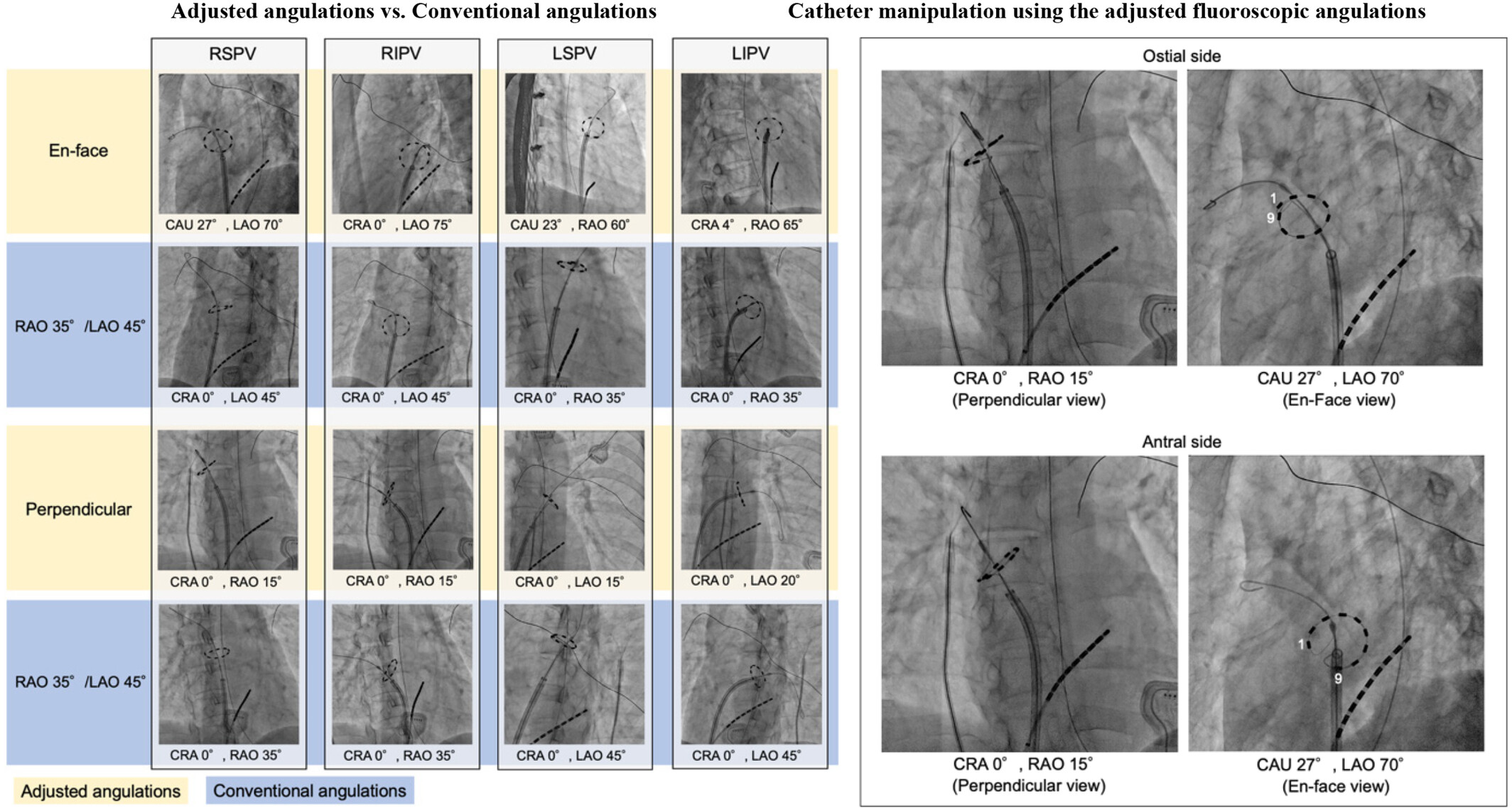
The circular-shaped PulseSelect™ PFA catheter has demonstrated comparable efficacy to traditional thermal catheter ablation in achieving pulmonary vein isolation (PVI), while preventing thermally mediated complications. However, this catheter does not have any objective parameters to confirm real-time tissue-catheter contact. We report a case in which PVI was achieved through PFA using optimal biplane fluoroscopic angulations which were more useful for accurately assessing and adjusting the position and rotation of the circular catheter electrodes than the conventional fluoroscopic angulations.
ORIGINAL ARTICLE
Novel omnipolar mapping technology for effective superior vena cava isolation: A randomized clinical trial
- First Published: 23 January 2025
Comparative analysis of left atrial size and appendage morphology in paroxysmal and persistent atrial fibrillation patients
- First Published: 23 January 2025
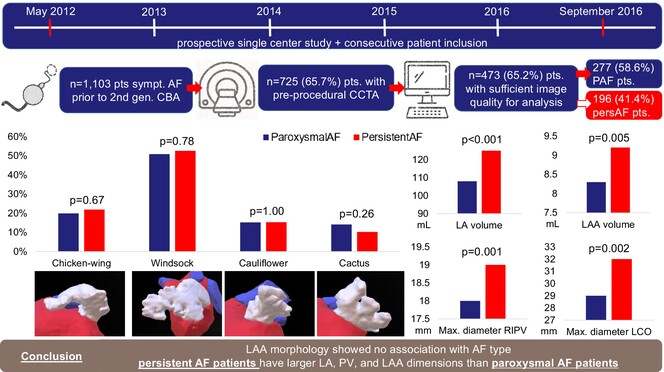
This study shows that persAF patients exhibit larger LA and LAA dimensions compared to PAF patients, with no significant differences in LAA morphology. These findings suggest that preprocedural analysis of anatomical dimensions, rather than LAA shape, could play a more important role in guiding personalized ablation strategies, particularly for complex AF cases.
EDITORIAL
Editorial to “Feasibility and efficacy of 50 W ablation with the TactiFlex catheter for the initial pulmonary vein isolation of atrial fibrillation”
- First Published: 21 January 2025
ORIGINAL ARTICLE
The efficacy and safety of intrinsic antitachycardia pacing
- First Published: 14 January 2025
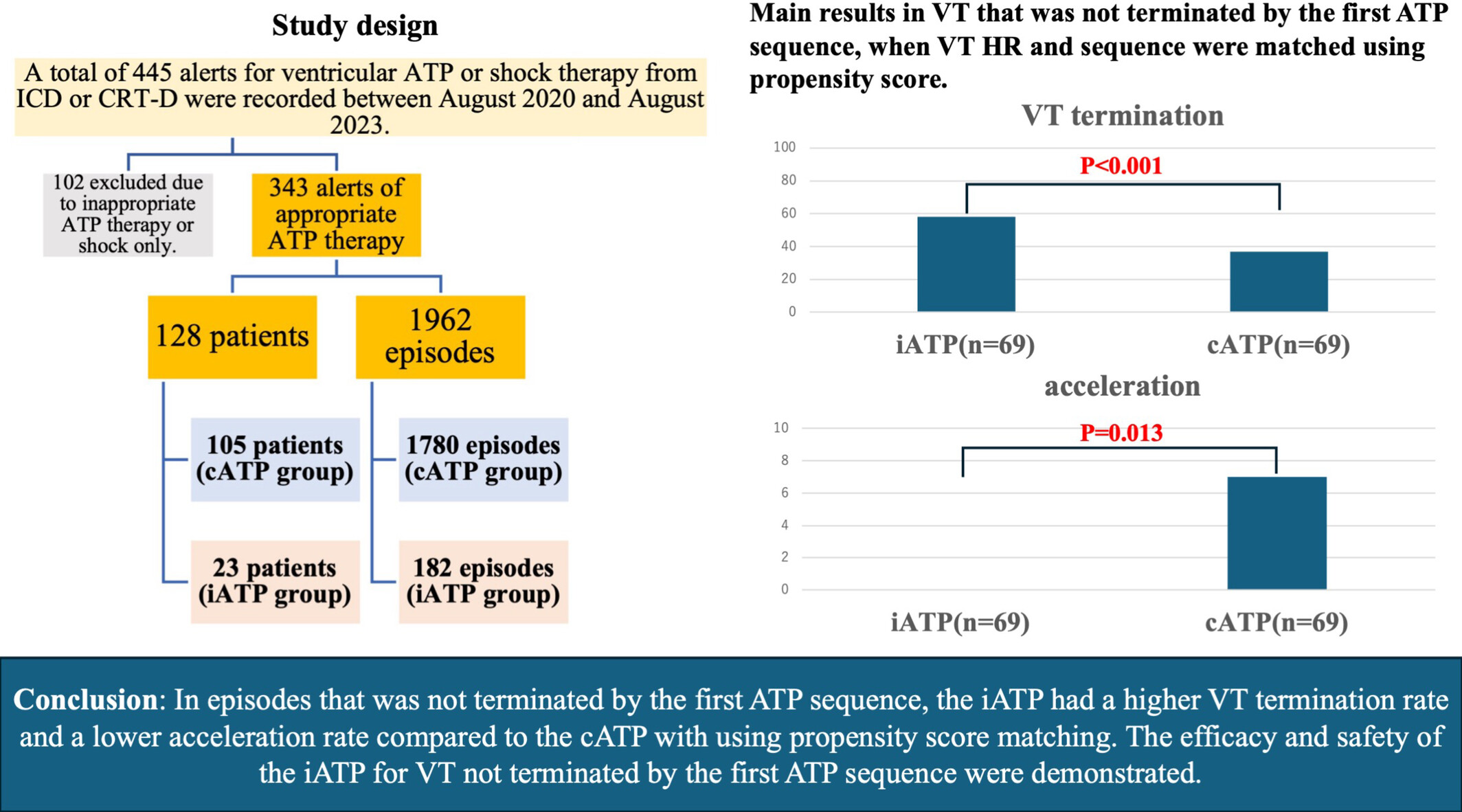
This study reports the efficacy and safety of intrinsic antitachycardia pacing (iATP) for ventricular tachycardia (VT) not terminated by the first ATP sequence, compared to conventional ATP. In the analysis of Sequence 2 and beyond, the iATP group demonstrated a higher VT termination rate and a lower acceleration rate.
Gastrointestinal bleed mortality disparities in patients with atrial fibrillation: A cross-sectional analysis 1999–2020
- First Published: 14 January 2025
Different effects of catheter ablation on exercise tolerance, leg strength, and quality of life in paroxysmal versus persistent atrial fibrillation
- First Published: 14 January 2025
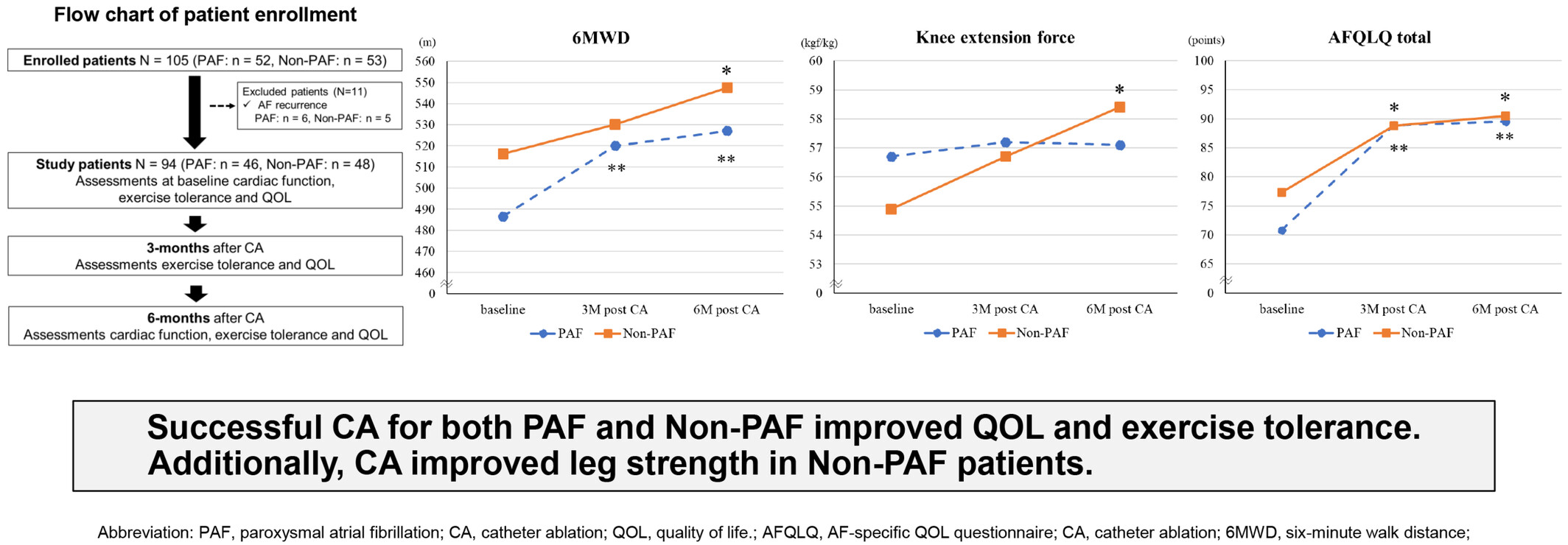
Successful catheter ablation (CA) can improve exercise tolerance and quality of life (QOL) in patients with atrial fibrillation (AF); however, its differential effects on muscle strength between paroxysmal AF (PAF) and nonparoxysmal AF (Non-PAF) remain unclear. Successful CA improved QOL and exercise tolerance in both PAF and Non-PAF patients, with additional improvements in leg strength observed in Non-PAF patients.
Real-world clinical practice of current periprocedural anticoagulation management in catheter ablation of atrial fibrillation: Data from a large prospective ablation registry
- First Published: 14 January 2025
EDITORIAL
Editorial to “Carbon dioxide insufflation to facilitate epicardial access in extracorporeal membrane oxygenation-supported ventricular tachycardia ablation”: Blowing an exhaled gas for easy and safe pericardial puncture
- First Published: 14 January 2025
Editorial to “Pre-procedural imaging guiding ventricular tachycardia ablation in structural heart disease”
- First Published: 14 January 2025
LETTER TO THE EDITOR
The causality between premature ventricular contraction and heart failure
- First Published: 10 January 2025
RAPID COMMUNICATION
Disparities in cardiac arrest mortality among patients with chronic kidney disease: A US-based epidemiological analysis
- First Published: 10 January 2025
SPOTLIGHT
Once a saint, now a sinner: An appropriate or inappropriate shock?
- First Published: 10 January 2025
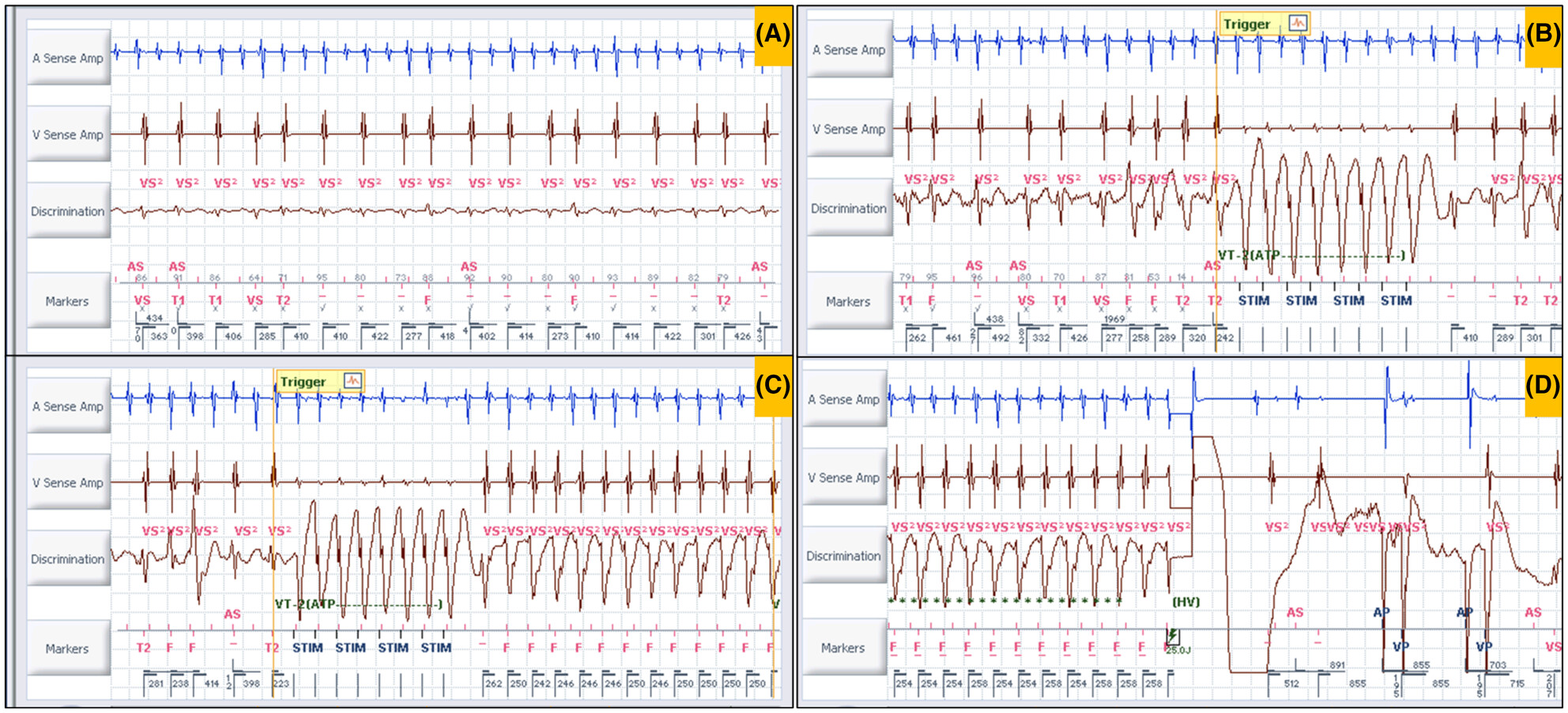
Critical analysis of electrograms of any therapy delivery event is paramount to identify the etiology, specificity, and sensitivity of the programmed algorithms to differentiate supraventricular versus ventricular tachycardia, its effectiveness, and potential interventions to prevent recurrence. Besides the aspects mentioned above, this case delves into the potential limitations of existing algorithms and the adverse effects of anti-tachycardia pacing.
ORIGINAL ARTICLE
A novel prediction model for survival in individual patients with cardiac resynchronization therapy with a defibrillator: Analysis of the new Japan cardiac device treatment registry database
- First Published: 07 January 2025
SPOTLIGHT
Retrieval of a dislodged leadless pacemaker: An example of the double-snare technique
- First Published: 07 January 2025
Differential response to right ventricular extrastimuli from the base and apex during long RP′ supraventricular tachycardia
- First Published: 07 January 2025
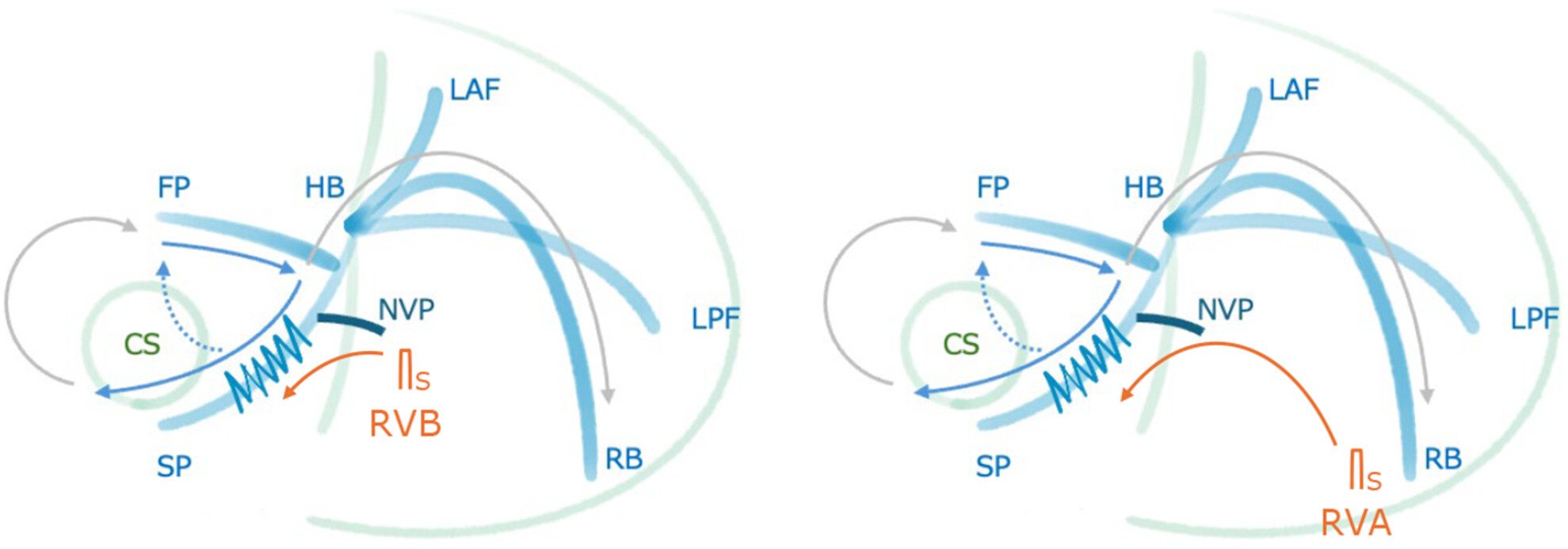
We report a case of long RP′ tachycardia diagnosed as fast–slow atrioventricular nodal reentrant tachycardia (AVNRT) with a bystander nodoventricular pathway (NVP). Differential responses to right ventricular extrastimuli from the base and apex highlighted the anatomical proximity of the NVP attachment, contributing to the diagnosis.
ORIGINAL ARTICLE
Two-year clinical outcomes of Taiwanese and other Asian ethnicities with atrial fibrillation treated with edoxaban in the ETNA-AF Asia registry
- First Published: 07 January 2025
Assessment of adverse events stratified by timing of leadless pacemaker implantation with cardiac implantable electronic devices extraction due to infection: A systematic review and meta-analysis
- First Published: 26 December 2024
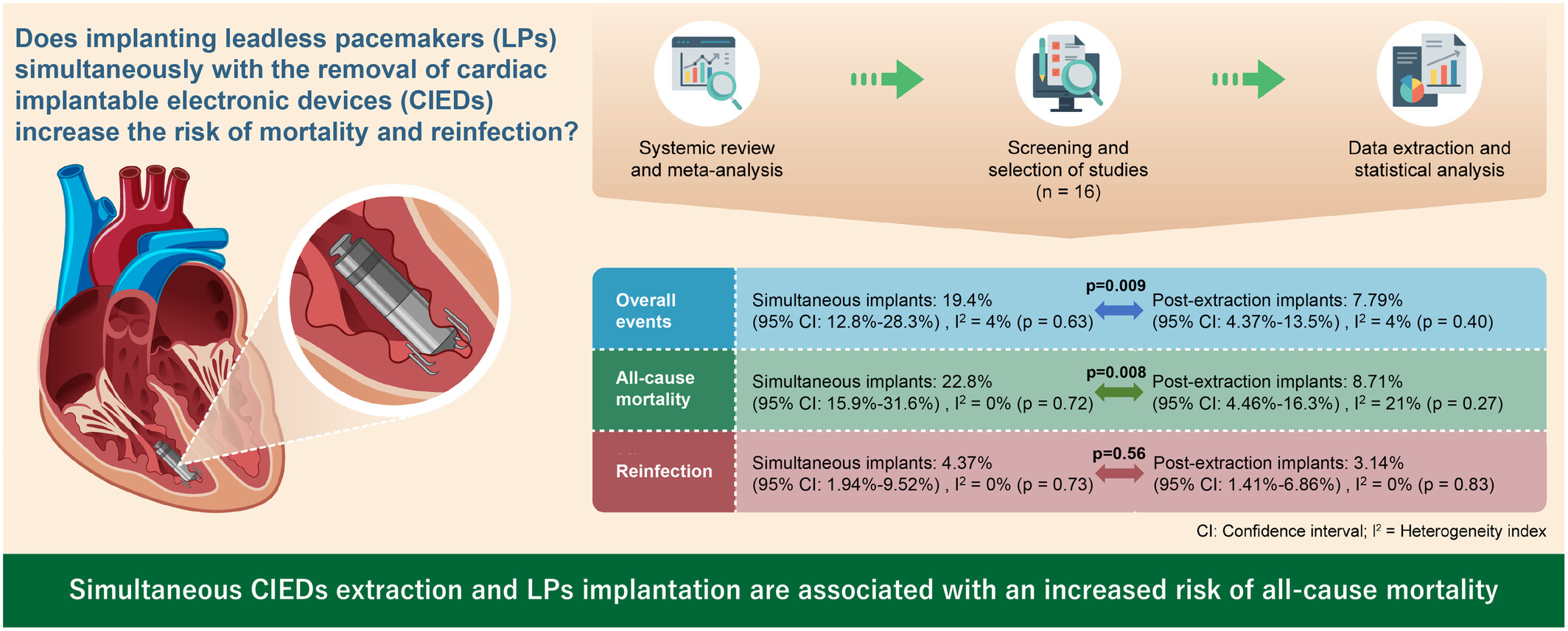
This meta-analysis of 16 studies examined the timing of leadless pacemaker implantation during CIED extraction for infections. While simultaneous implantation shows a low risk of reinfection, it is associated with higher all-cause mortality, and careful consideration of the timing of implantation is recommended.
LETTER TO THE EDITOR
Atrial arrhythmias with mediastinal lymphadenopathy presentation of isolated atrial myocarditis
- First Published: 25 December 2024
SPOTLIGHT
Utility of using far-field R-wave signals in the detection of fatal ventricular arrhythmia
- First Published: 23 December 2024

Current guidelines recommend cardioverter-defibrillator (ICD) programming, including faster detection rates, longer detection durations, and strict discrimination for supraventricular tachycardia (SVT) to prevent unnecessary ICD treatment. This delayed-style ICD programming could lead to a rise in the possibility of VF undersensing. To avoid this risk, an innovative algorithm known as VF Therapy Assurance (VFTA; Abbott, Sylmar, CA) has been developed. VFTA uses far-field R-wave signals during VT or VF episodes to provide ICD therapy in cases of near-field R-wave signal undersensing.
ORIGINAL ARTICLE
Management of patients following implantable cardioverter-defibrillator therapy—The importance of a multifaceted approach
- First Published: 22 December 2024
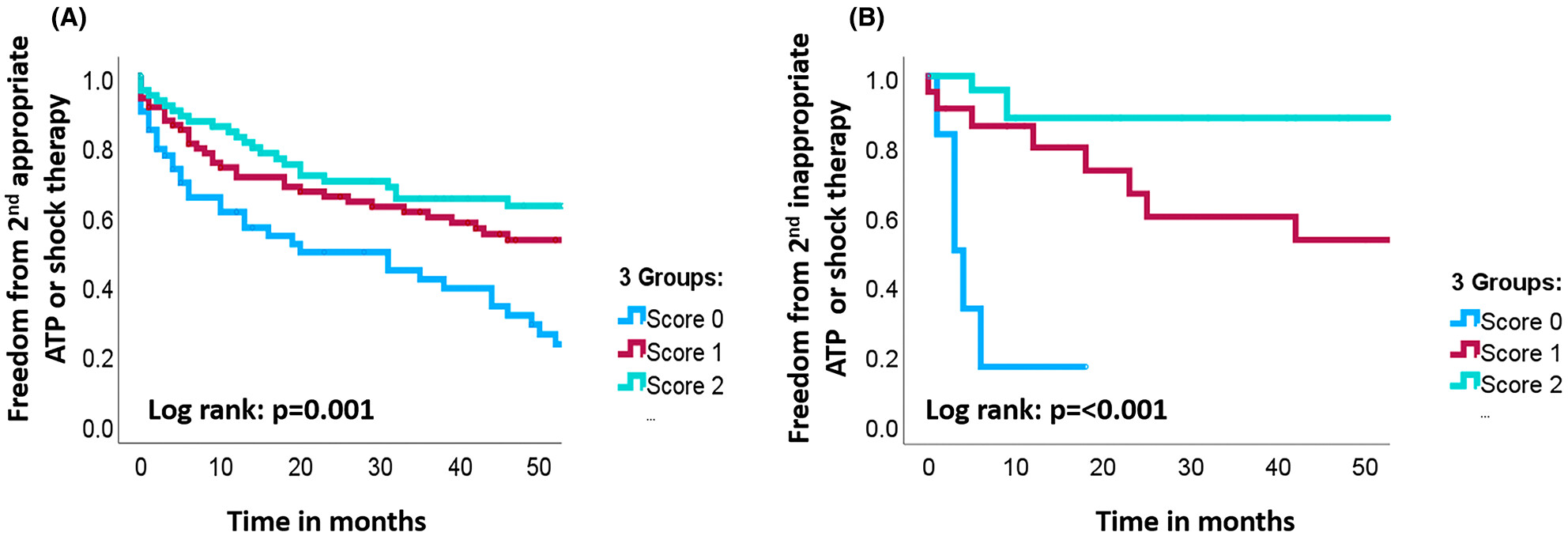
For both appropriate and inappropriate therapy, the risk of a subsequent ICD therapy is significantly elevated following the 1st therapy. An approach combining treatment strategies may be more effective than using single strategies alone to prevent subsequent therapy in patients presenting following a 1st ICD therapy.
Preprocedural imaging guiding ventricular tachycardia ablation in structural heart disease
- First Published: 19 December 2024
High-density mapping in catheter ablation for atrial fibrillation in Asia Pacific region: An observational study
- First Published: 18 December 2024
EDITORIAL
Editorial to “Carbon dioxide insufflation to facilitate epicardial access in ECMO-supported ventricular tachycardia ablation”
- First Published: 18 December 2024
ORIGINAL ARTICLE
EDITORIAL
Editorial to “comparison of ex vivo lesion formation for two adjacent radiofrequency applications with very-high-power short-duration in various inter-lesion times”
- First Published: 10 December 2024
LETTER TO THE EDITOR
How to consider the indication of leadless pacemaker versus conventional transvenous pacemaker following their comparison in cost-effectiveness
- First Published: 06 December 2024
ORIGINAL ARTICLE
Novel anticoagulation therapy using apple watch after catheter ablation for atrial fibrillation—Up to AF trial: Design and rationale
- First Published: 05 December 2024
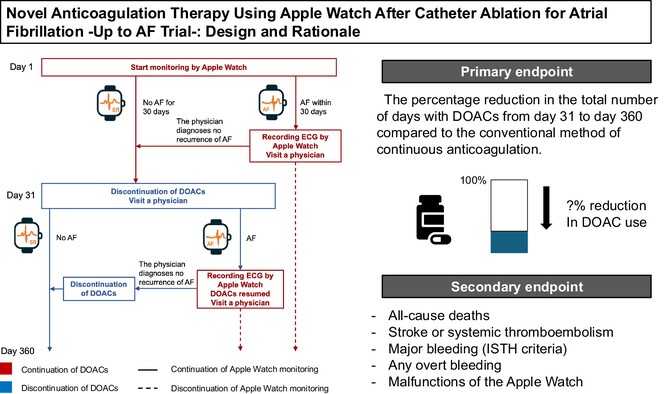
The Up to AF trial evaluates Apple Watch-guided personalized anticoagulation therapy for atrial fibrillation (AF), adjusting DOAC use based on real-time AF detection. In this single-arm study, 50 post-ablation patients are monitored, aiming to reduce DOAC days while assessing mortality, stroke, and bleeding events. Results are expected in 2025.
Comparison of ex vivo lesion formation for two adjacent radiofrequency applications with very high-power short-duration in various inter-lesion times
- First Published: 05 December 2024
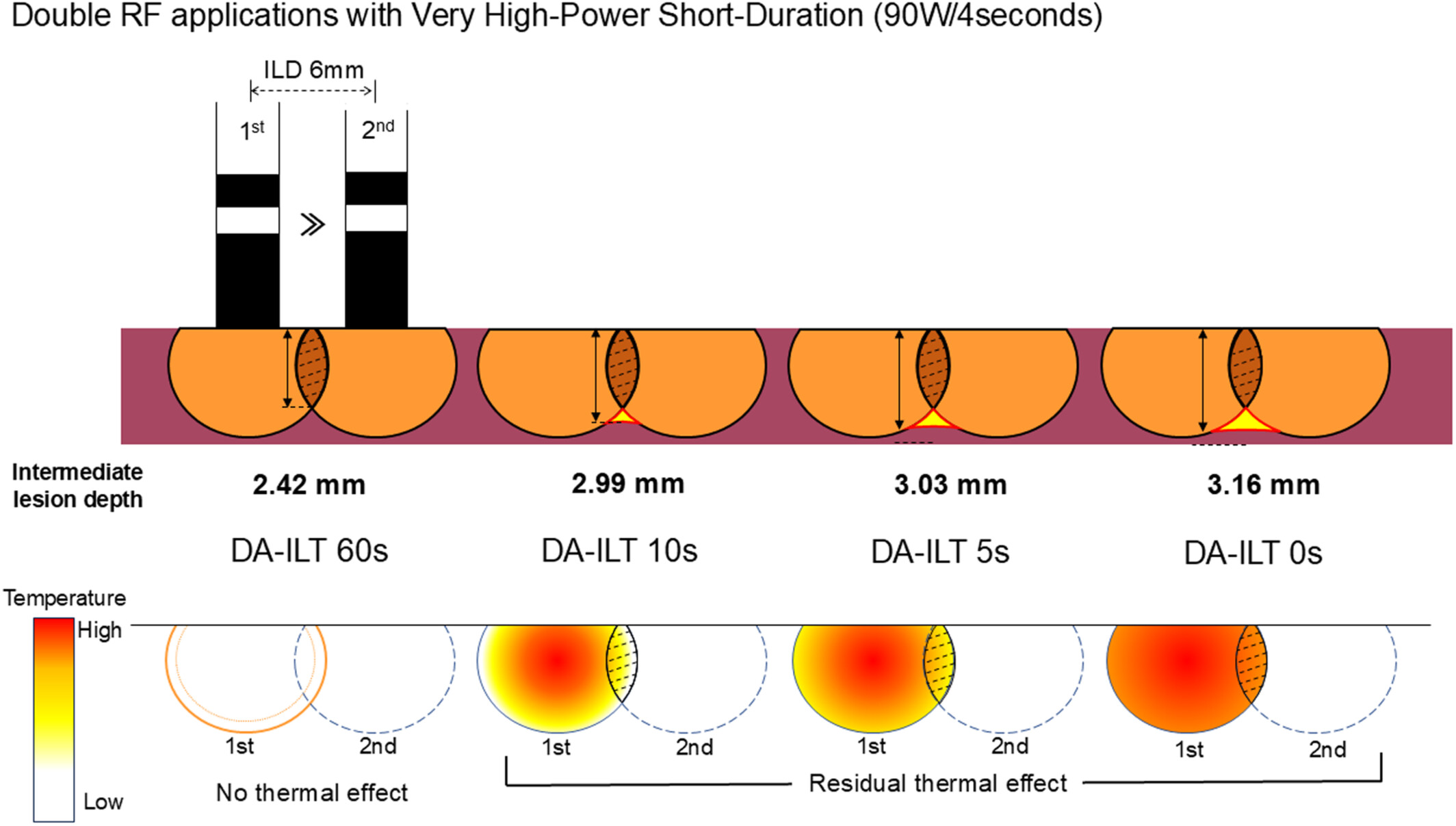
Radiofrequency lesions were created using double applications (DA) with a 6 mm inter-lesion distance (ILD) and inter-lesion times (ILT) of 60, 10, 5, and 0 s. Shorter ILT groups (10, 5, 0 s) showed significantly deeper intermediate lesion depth than the 60 s group, suggesting involvement of the conductive thermal effect.
SPOTLIGHT
Utility of dual-chamber Electrogram-based pace mapping in a teenager with a focal atrial tachycardia, low inducibility, and indeterminate earliest excitation site
- First Published: 05 December 2024
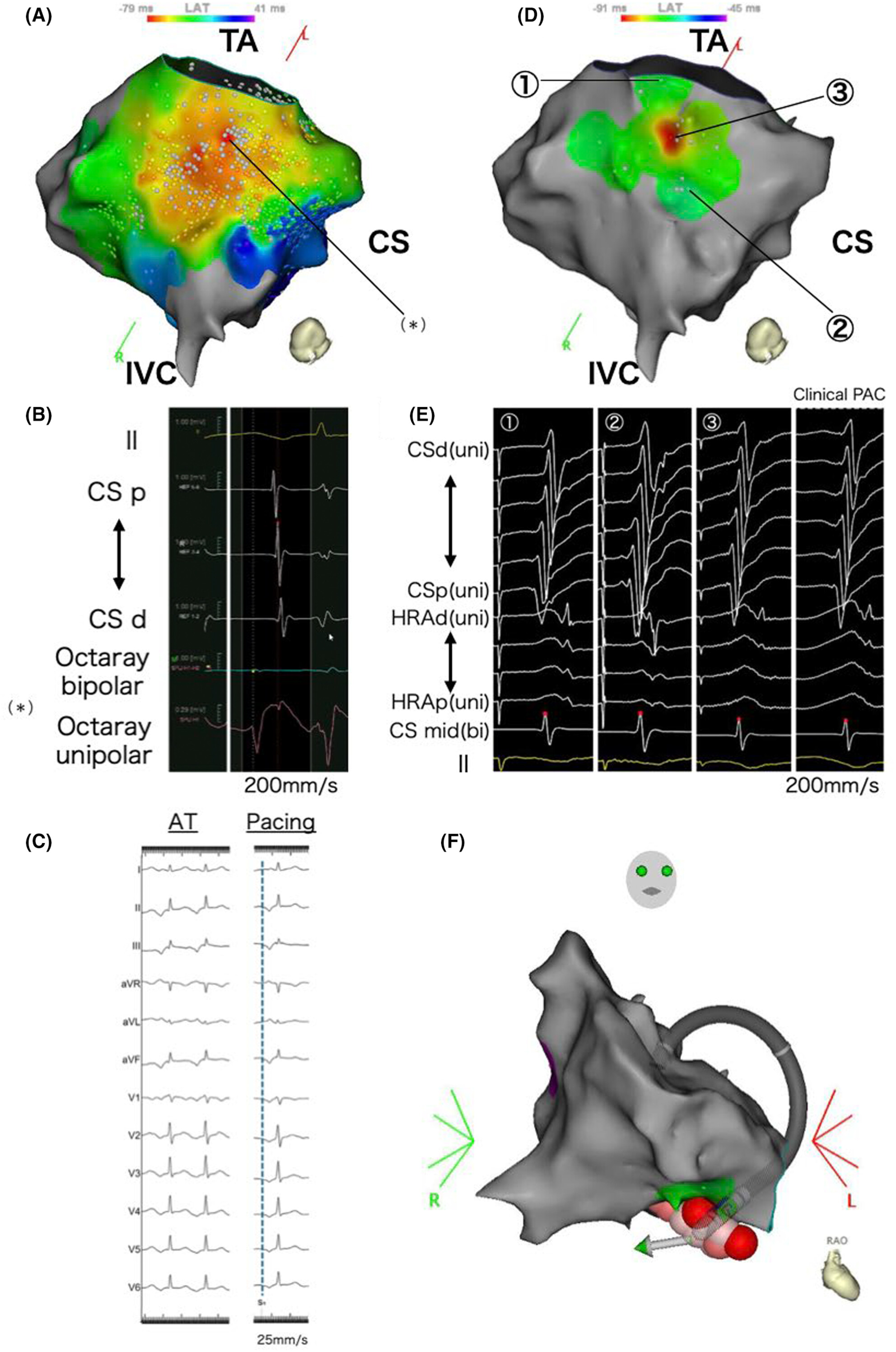
A 17-year-old patient presented with frequent palpitations, where the tachycardia was not sustained and could not be induced, making it impossible to pinpoint the earliest activation site using the activation map. However, by utilizing a dual-chamber electrogram-based pace mapping technique, we successfully identified the origin and achieved effective treatment.
ORIGINAL ARTICLE
Impact of prolonged QTc interval on mortality risk with hypertrophic cardiomyopathy
- First Published: 02 December 2024
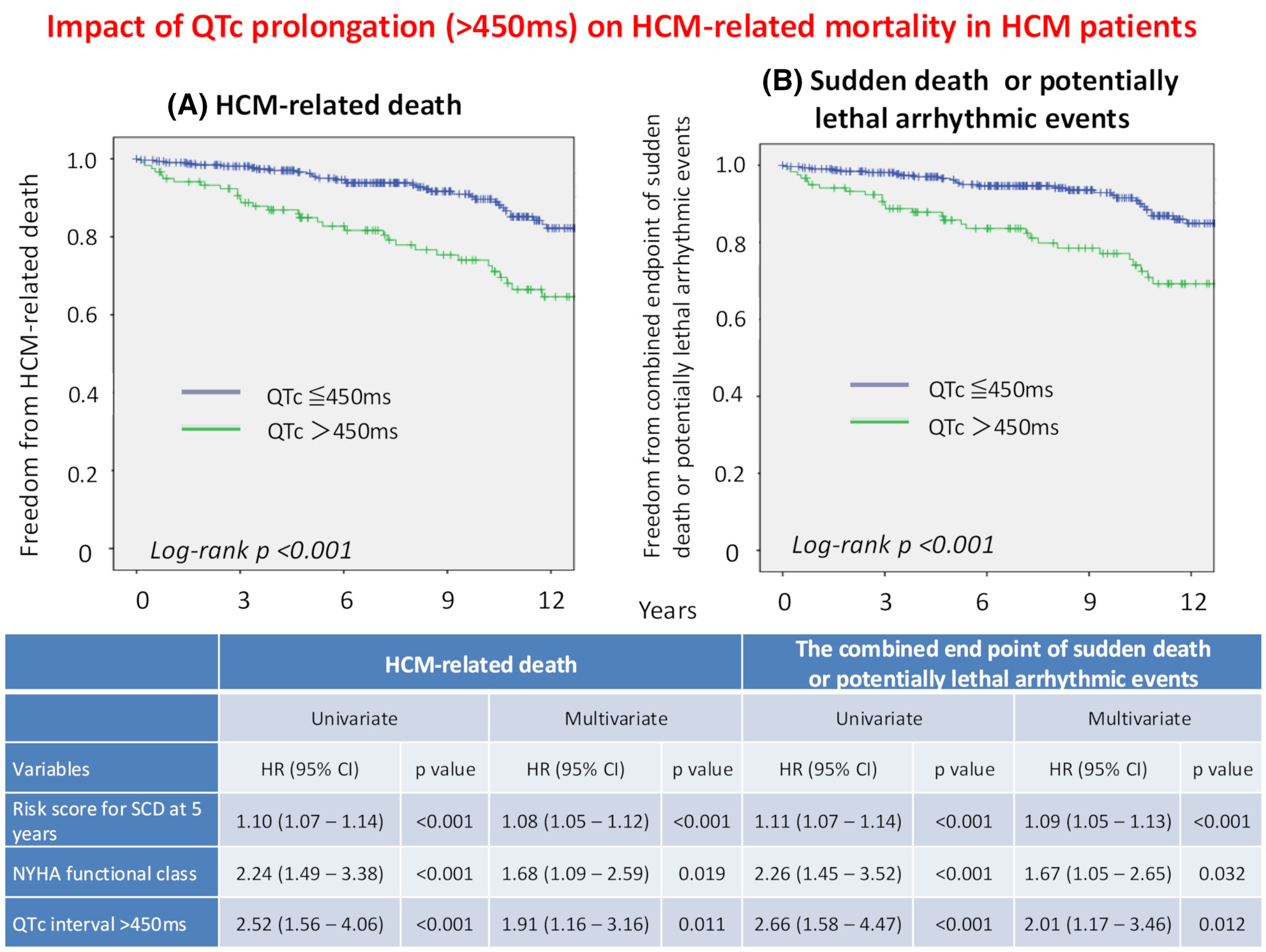
Prolonged QTc was associated with increased risk of HCM-related mortality, including sudden death or lethal arrhythmias, and could serve as a simple, practical marker for identifying high-risk patients. Our findings suggest that QTc prolongation is also valuable in Japanese populations, supporting its use in guiding personalized treatment strategies.
Malnutrition and risks of atrial fibrillation recurrence after catheter ablation
- First Published: 01 December 2024
Sex differences in atrial fibrillation in India: Insights from the Kerala-AF registry
- First Published: 01 December 2024
SPOTLIGHT
First in Asia: Ventricular tachycardia ablation in patients with mechanical aortic and mitral valves using right atrium to left ventricle approach
- First Published: 26 November 2024
ORIGINAL ARTICLE
Paroxysmal atrial fibrillation is associated with poor sleep quality: Tamagawa cross-sectional study on the relationship between lifestyle and atrial fibrillation (TAMAGAWA-AF study)
- First Published: 25 November 2024
LETTER TO THE EDITOR
Clinical implication of ANTWERP score in patients receiving catheter ablation for atrial fibrillation
- First Published: 25 November 2024
ORIGINAL ARTICLE
Impact of polypharmacy on clinical outcomes in patients with advanced heart failure undergoing cardiac resynchronization therapy
- First Published: 22 November 2024
Feasibility and efficacy of 50 W ablation with the TactiFlex catheter for the initial pulmonary vein isolation of atrial fibrillation
- First Published: 22 November 2024
EDITORIAL
Editorial comment on “Usefulness of peak frequency in electrograms for elimination of left atrial posterior wall residual potentials via epicardial connections”
- First Published: 21 November 2024
SPOTLIGHT
Carbon dioxide insufflation to facilitate epicardial access in ECMO-supported ventricular tachycardia ablation
- First Published: 21 November 2024
LETTER TO THE EDITOR
Clinical implication of ivabradine-incorporated medical therapy for junctional ectopic tachycardia following pediatric cardiac surgery
- First Published: 20 November 2024
SPOTLIGHT
Usefulness of peak frequency in Electrograms for elimination of left atrial Posterior Wall residual potentials via Epicardial connections
- First Published: 19 November 2024
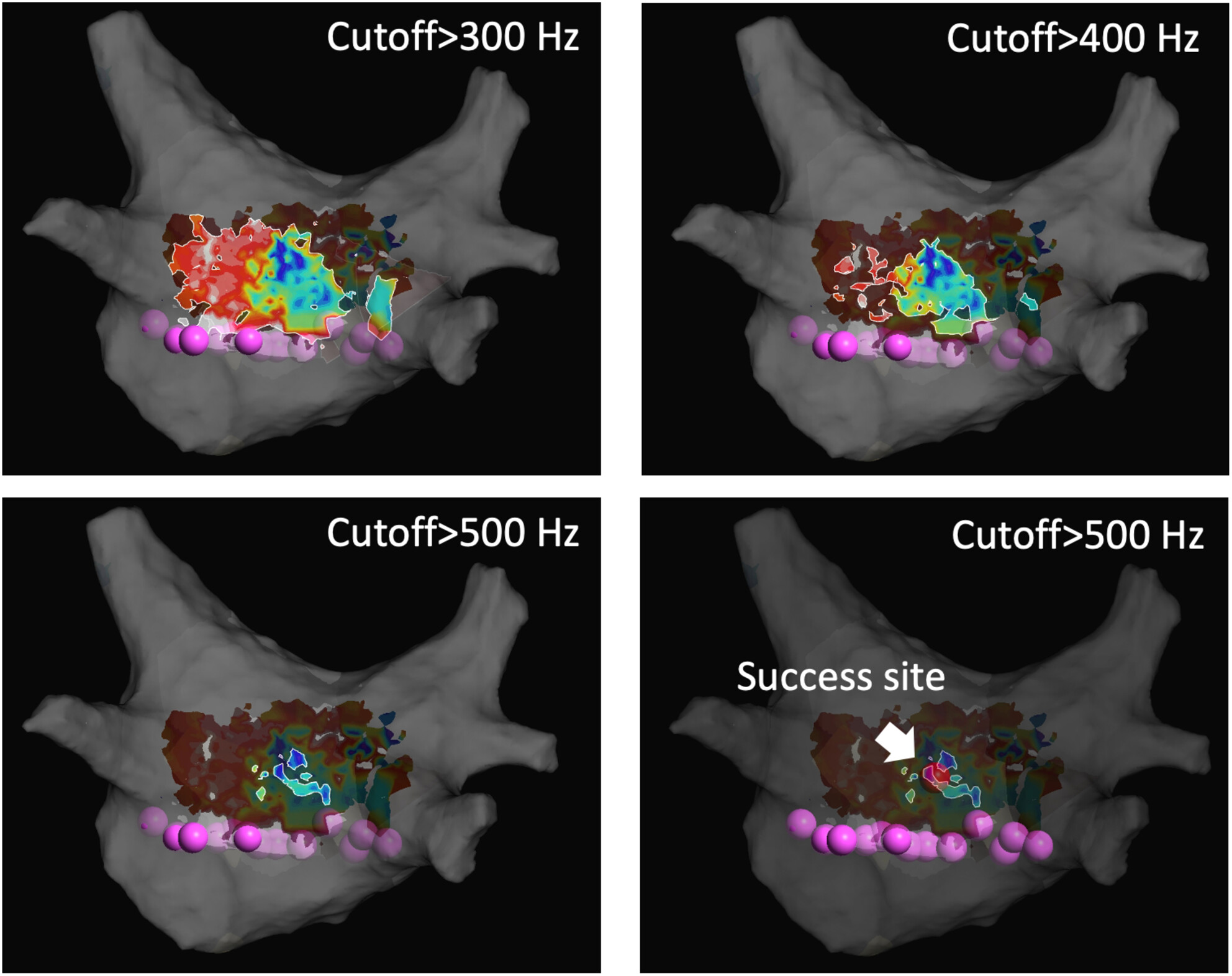
Left atrial posterior wall (LAPW) residual potentials via epicardial connections during LAPW isolation are often low-frequency continuous potentials. Accurate annotation of these residual potentials by three-dimensional electroanatomical mapping systems is challenging and can be misleading. Herein, we present a case of successful LAPW isolation using peak frequency analysis.
ORIGINAL ARTICLE
Atrial arrhythmias with mediastinal lymphadenopathy presentation of isolated atrial myocarditis
- First Published: 14 November 2024
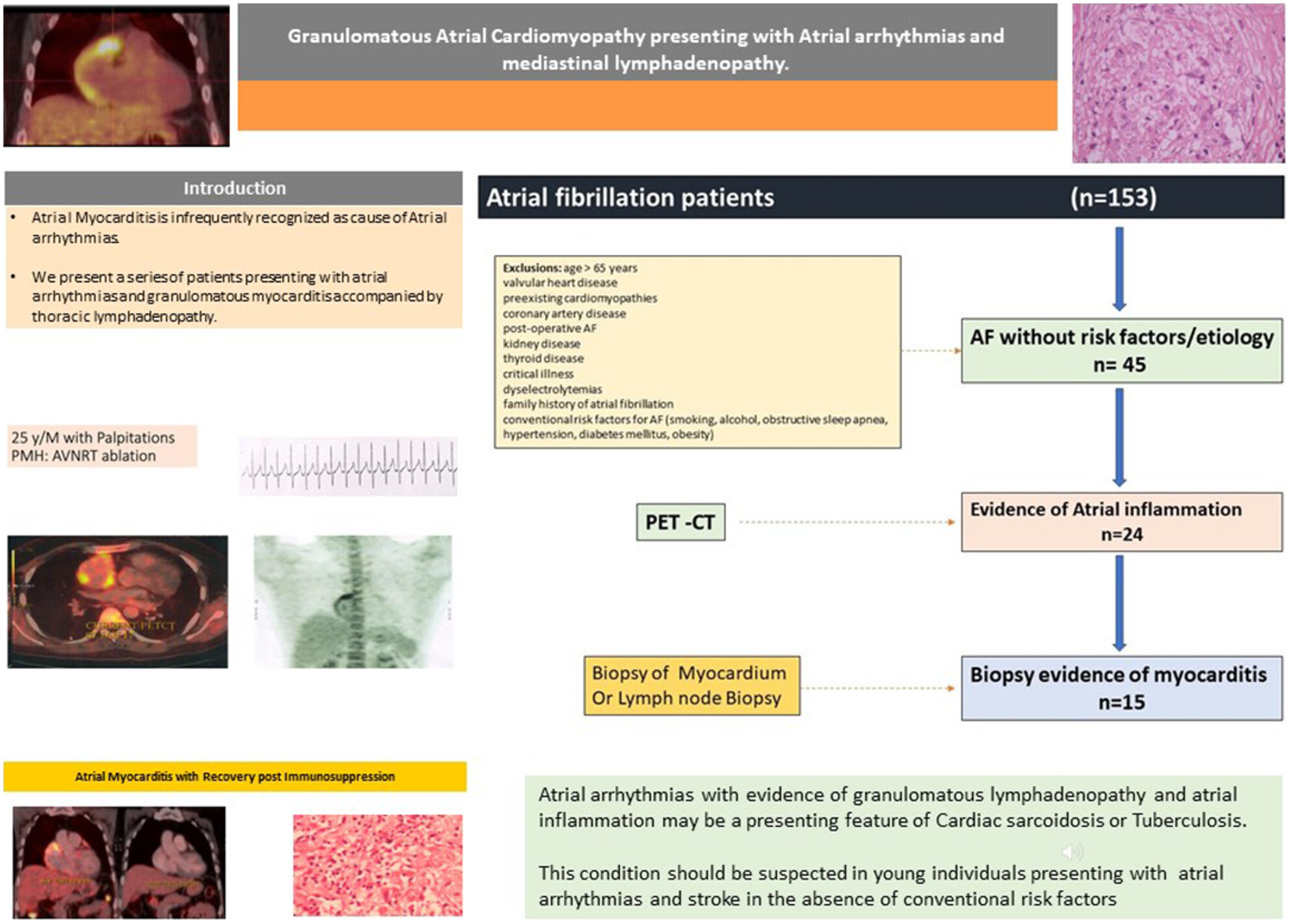
Atrial myocarditis characterized by granulomatous inflammation typical of sarcoidosis or tuberculosis, can be a cause of atrial fibrillation in young patients who don't exhibit classical risk factors. It can present with extracardiac features such as lymphadenopathy and stroke. This emphasizes the importance of recognizing and managing the underlying inflammatory condition.




